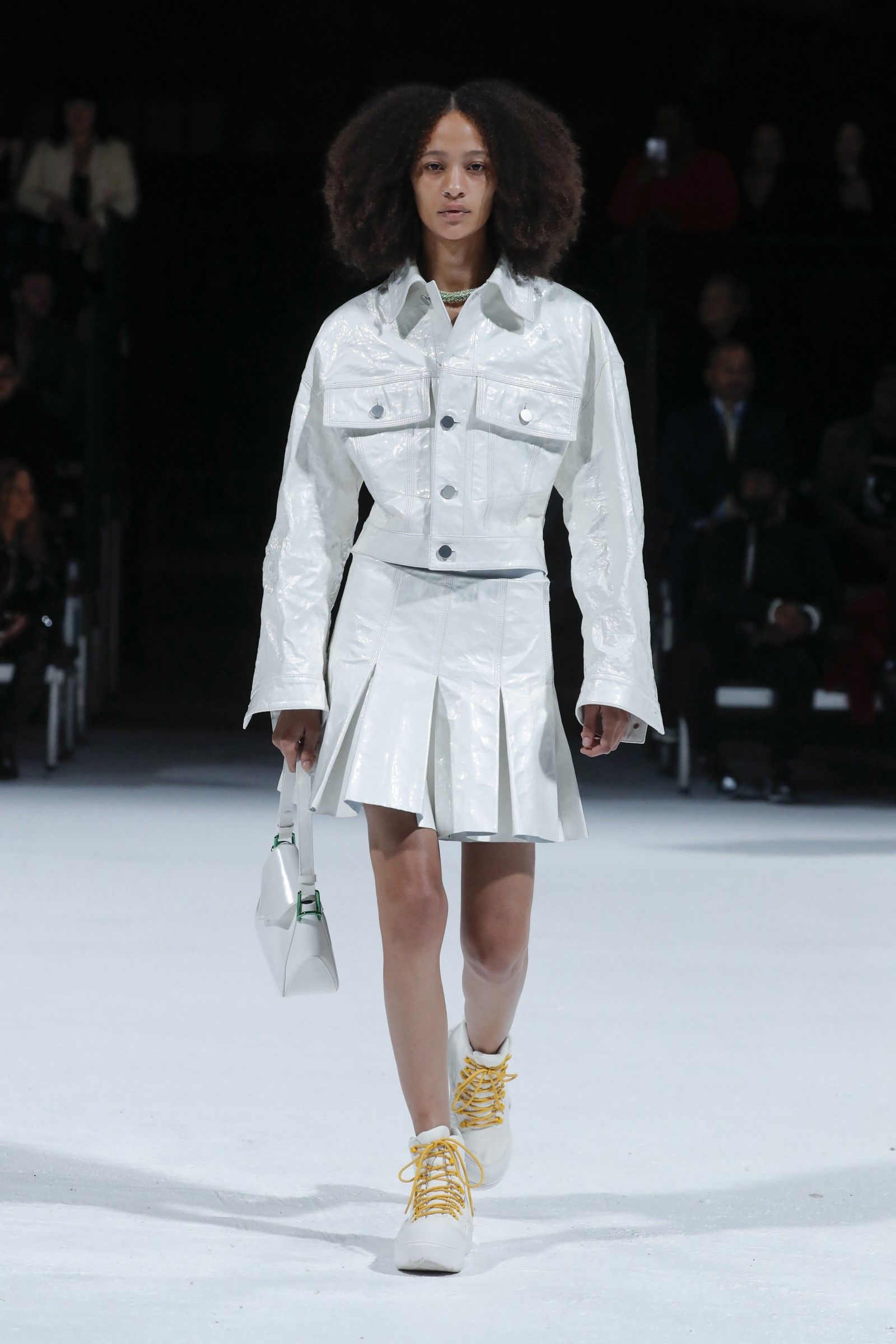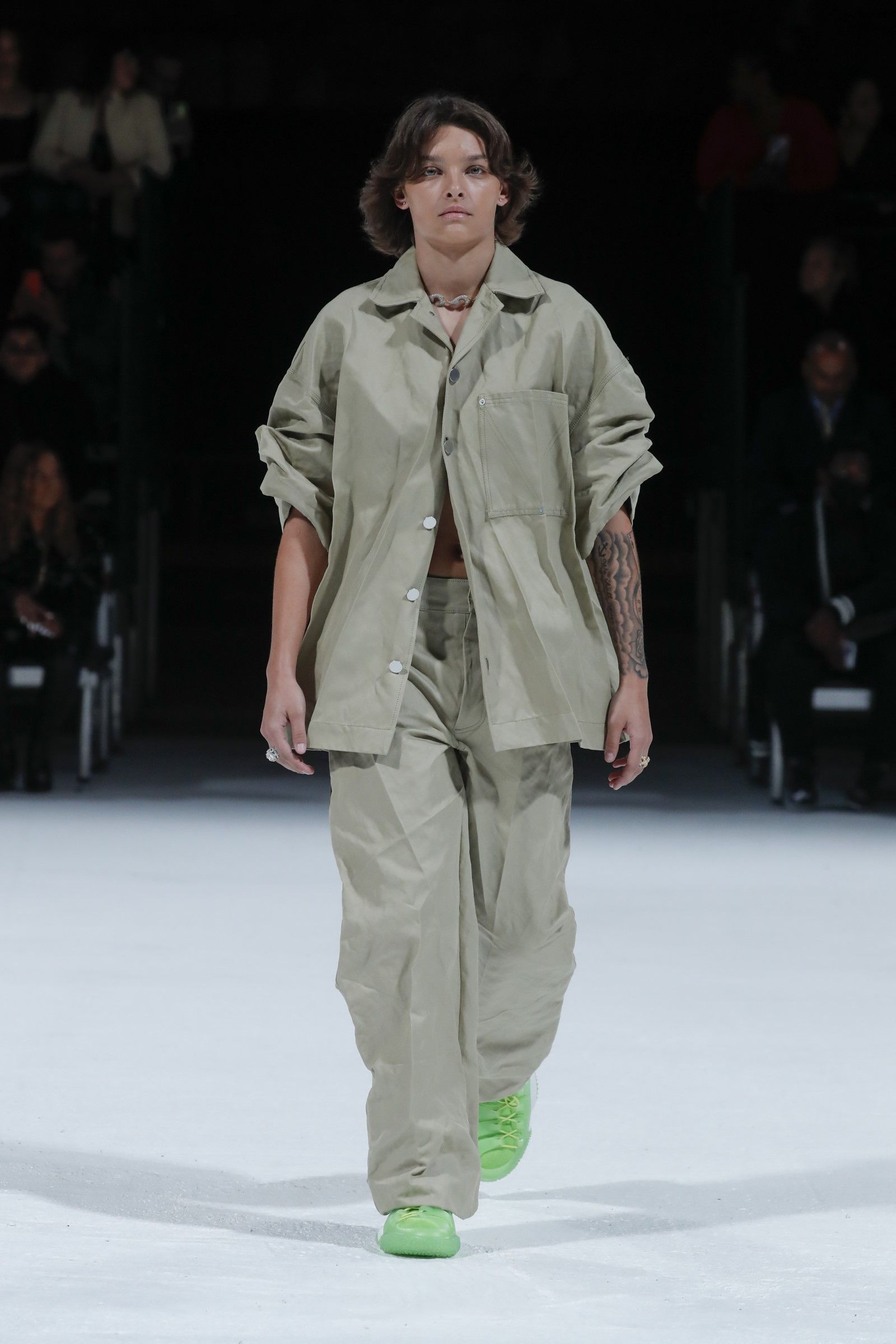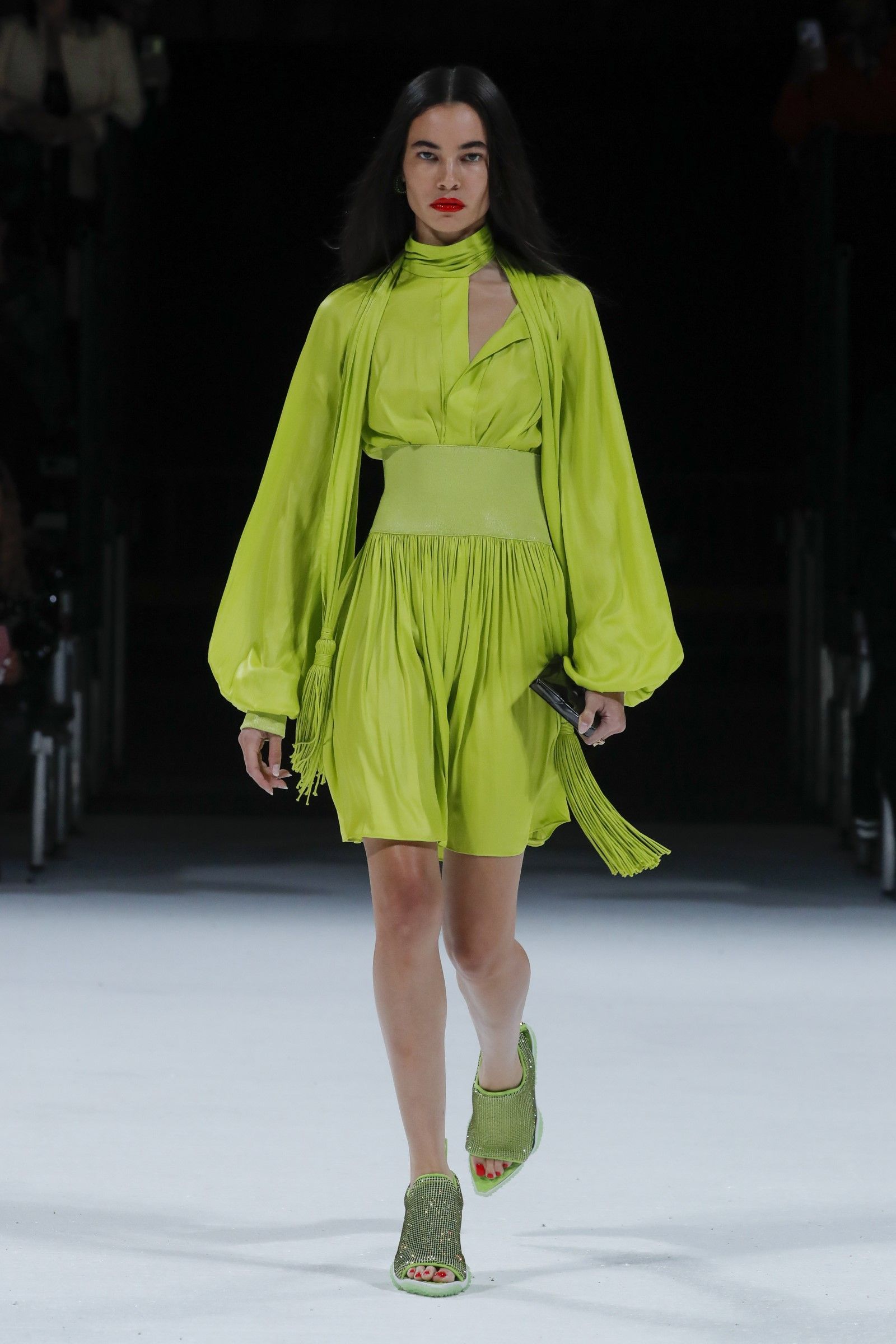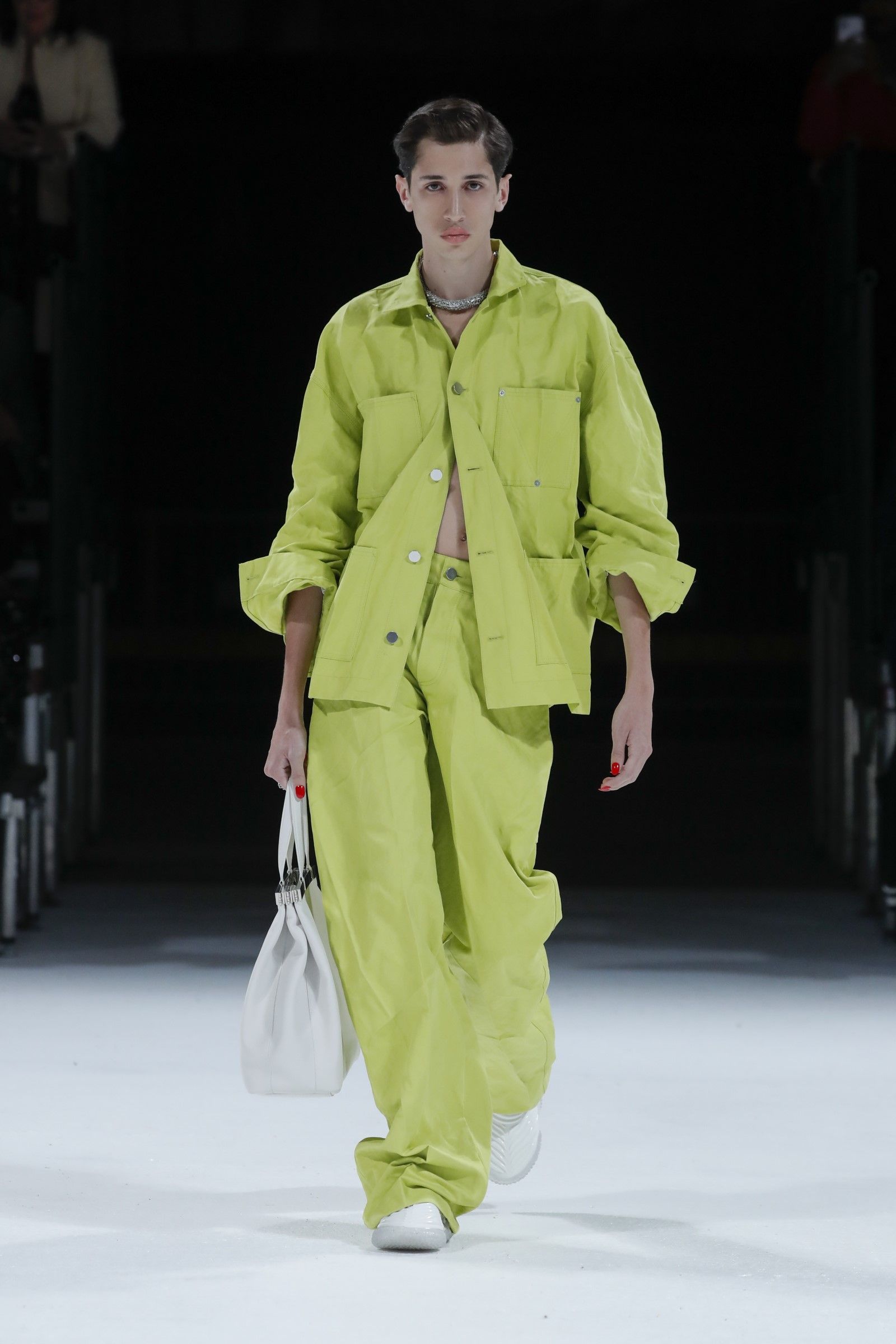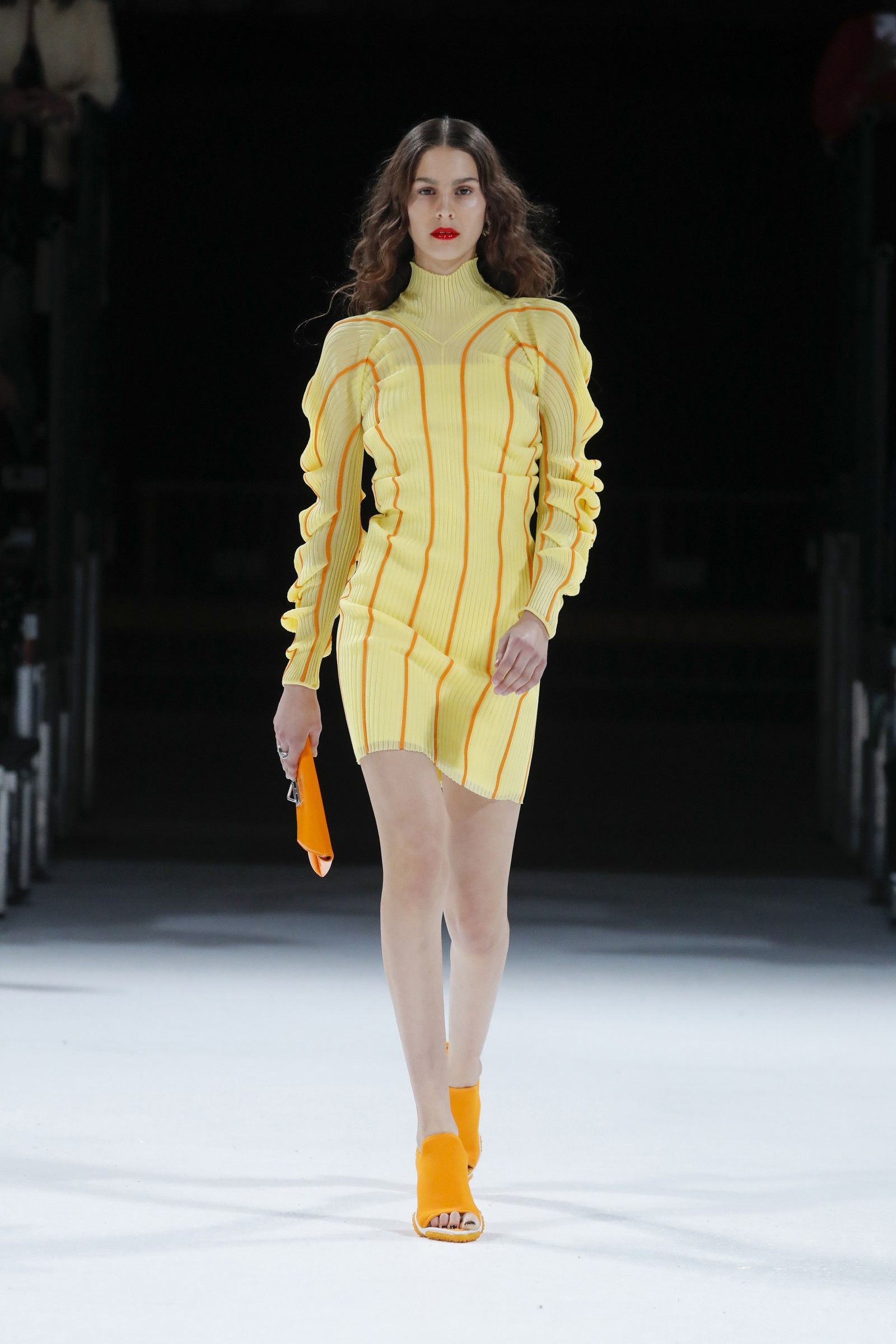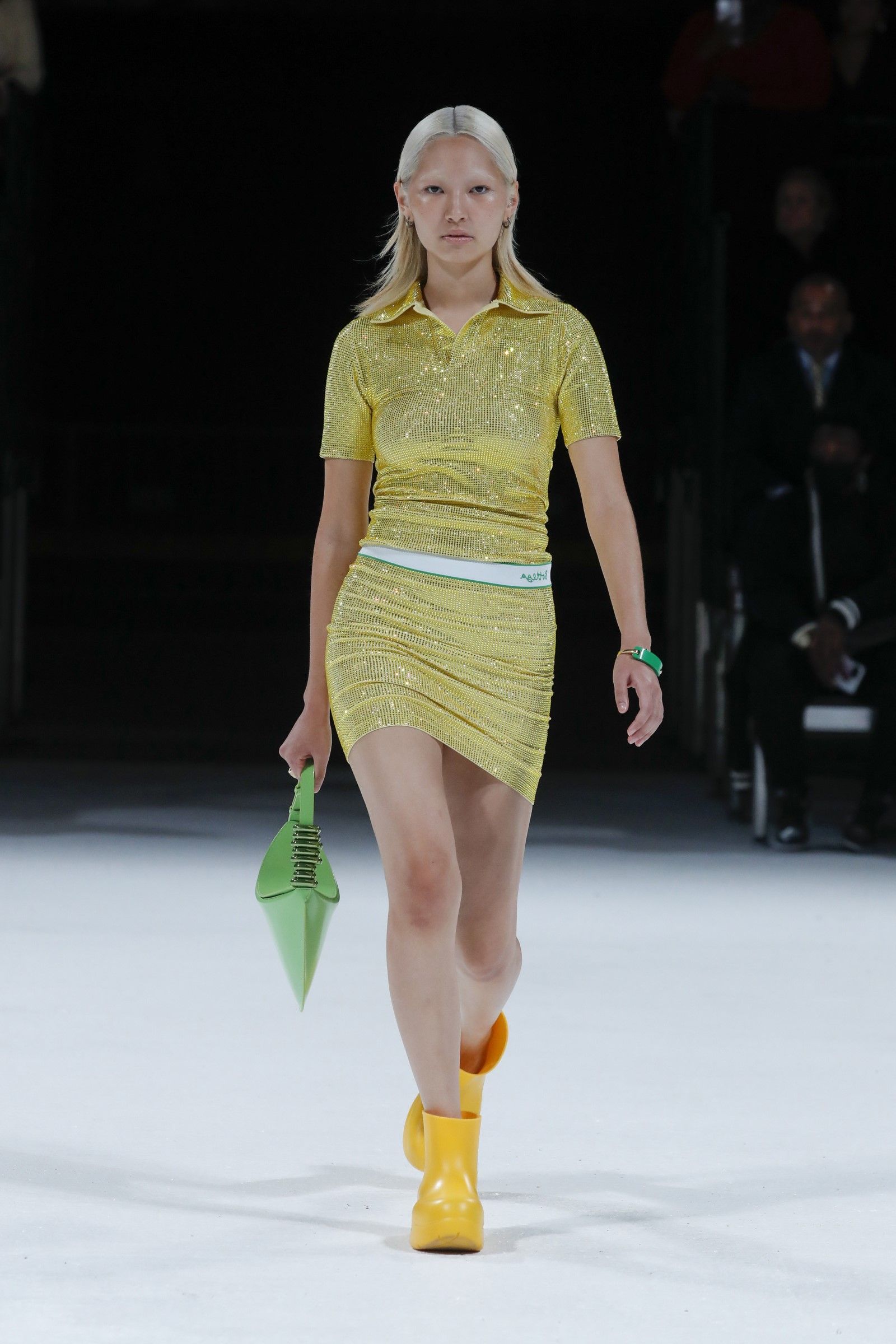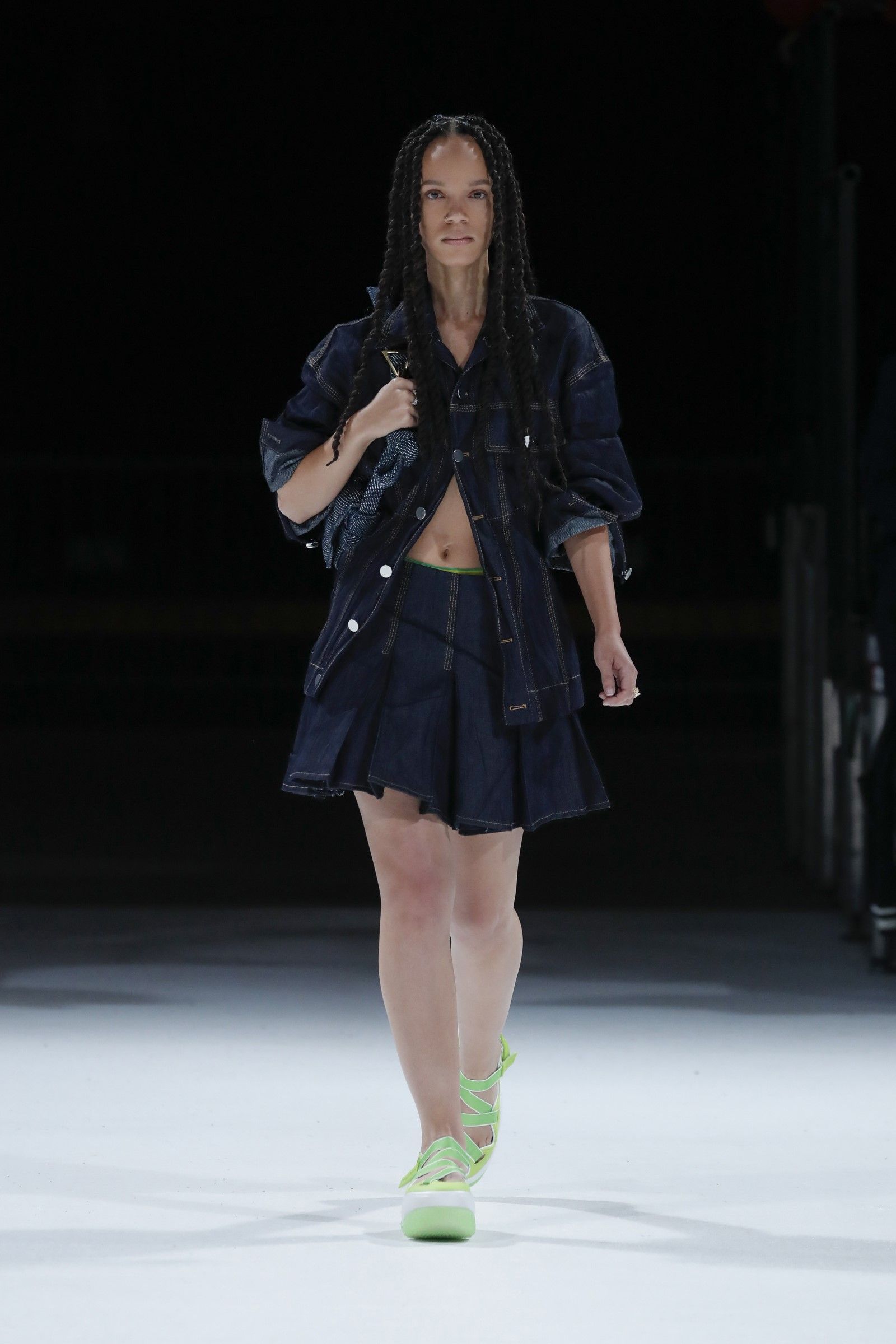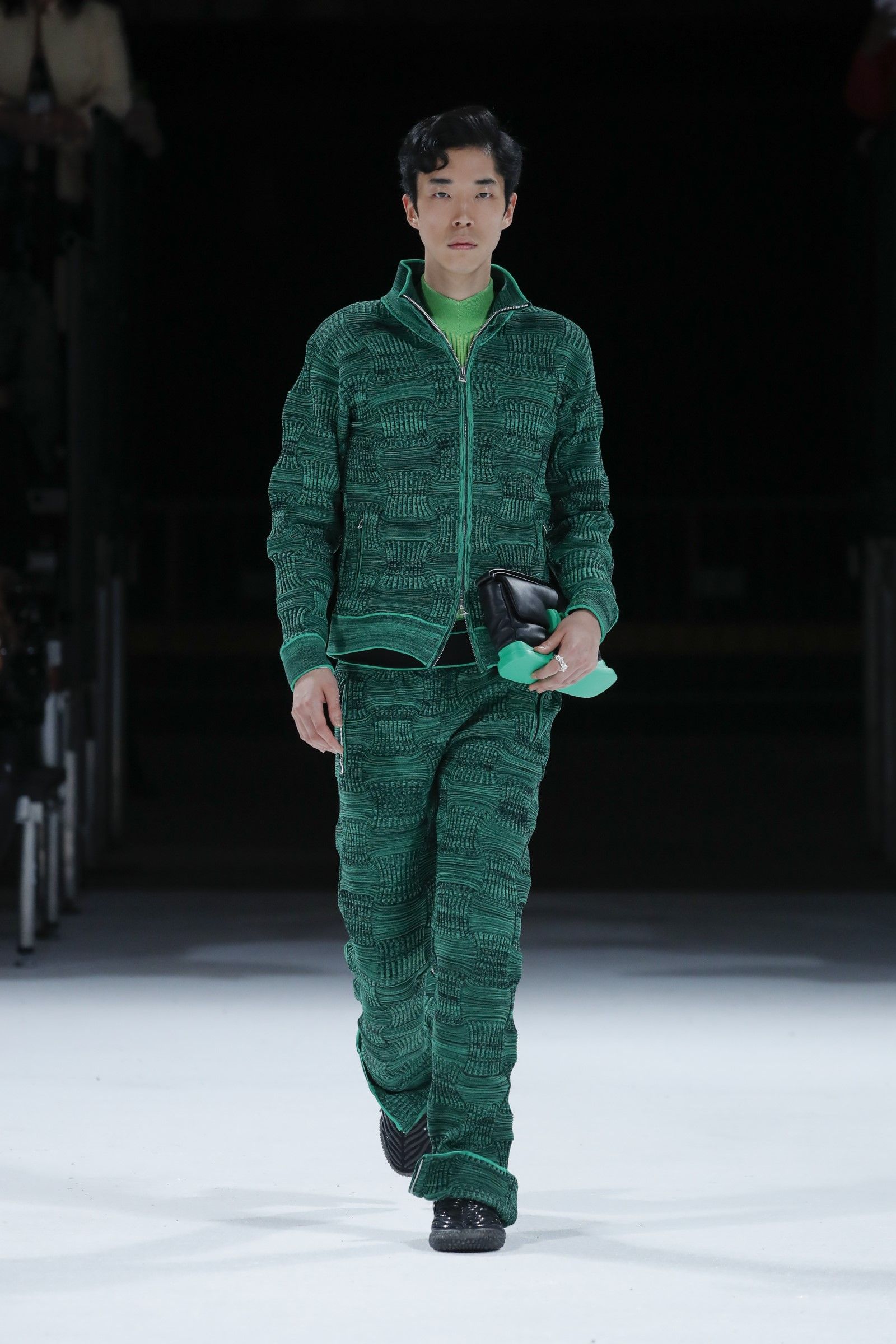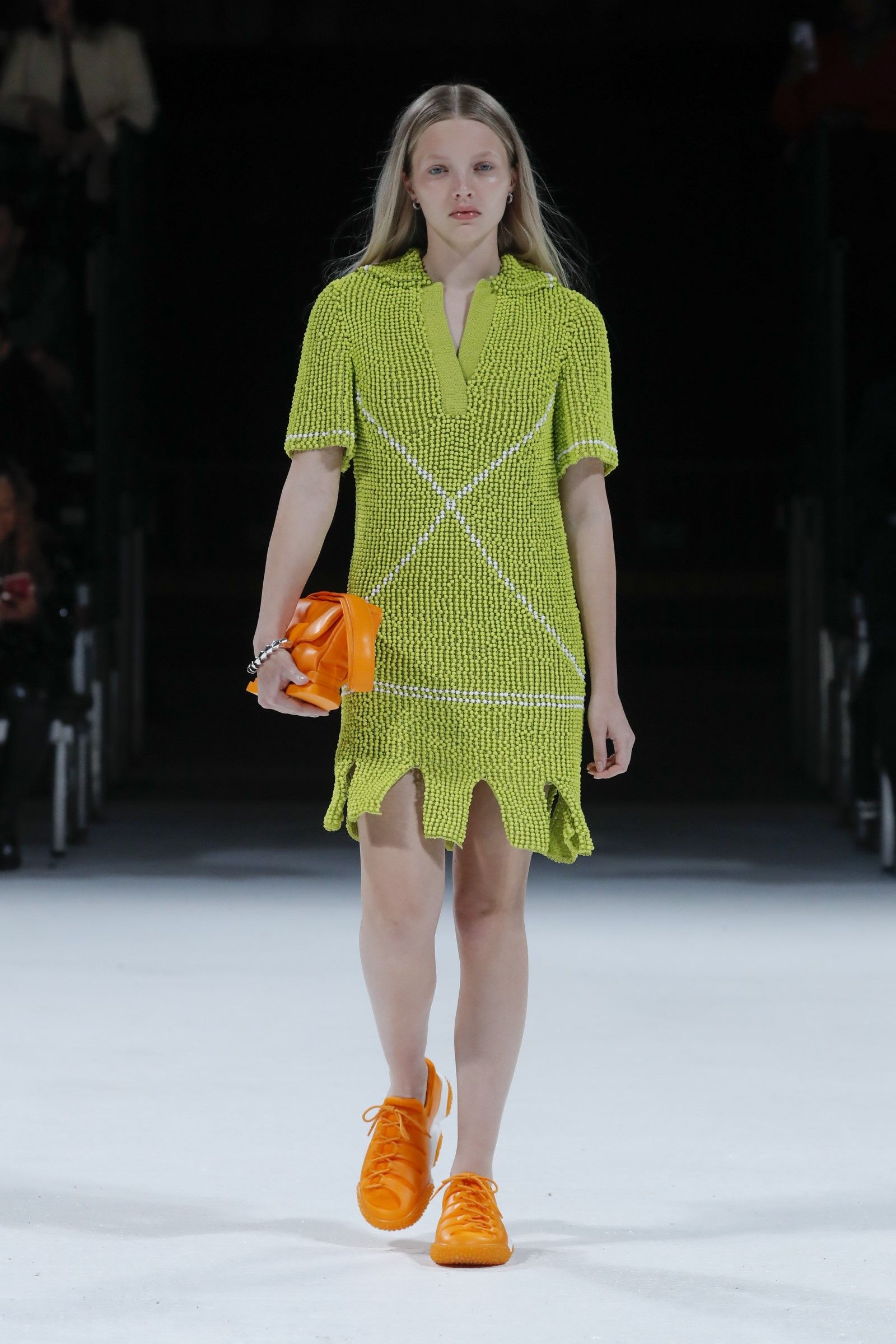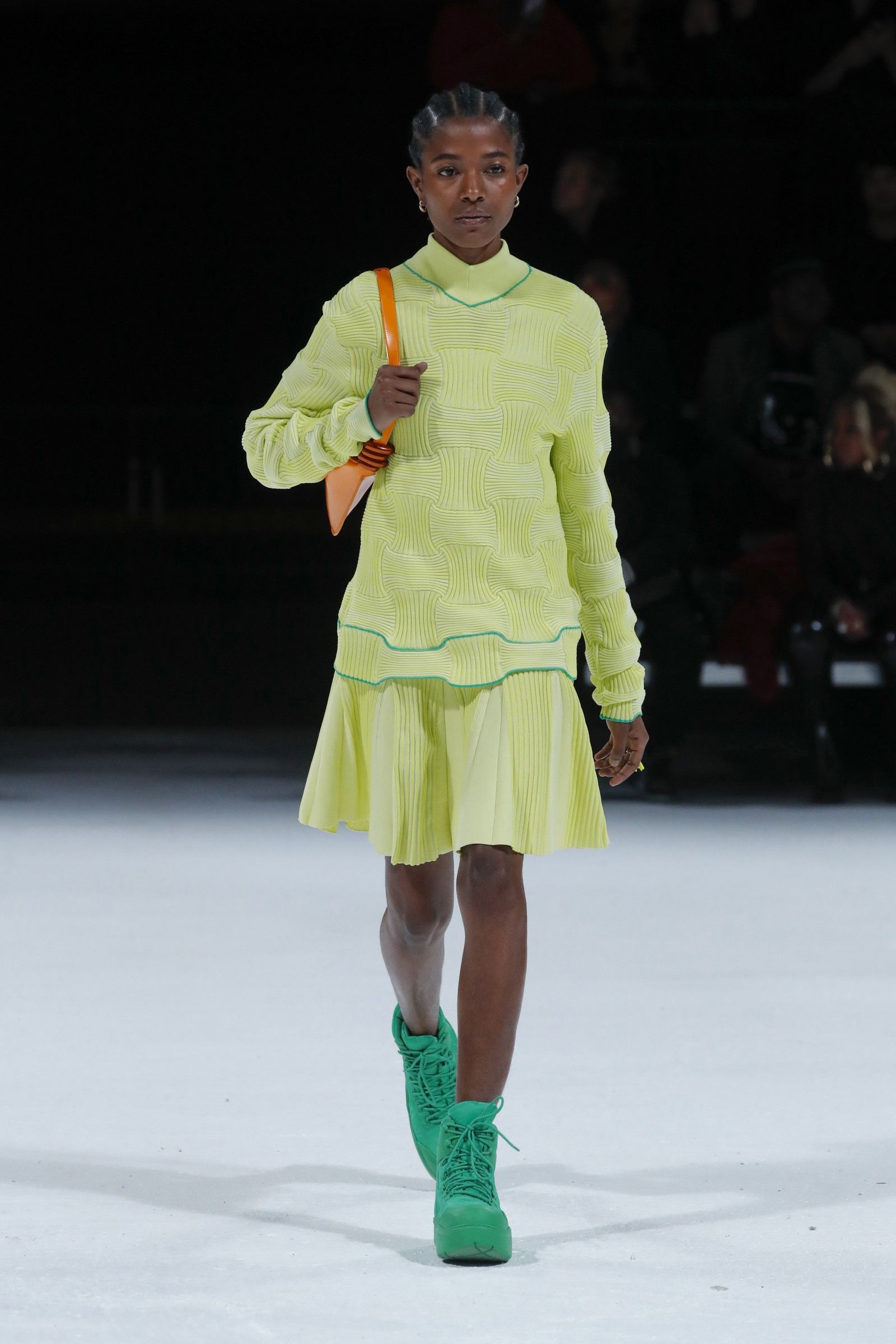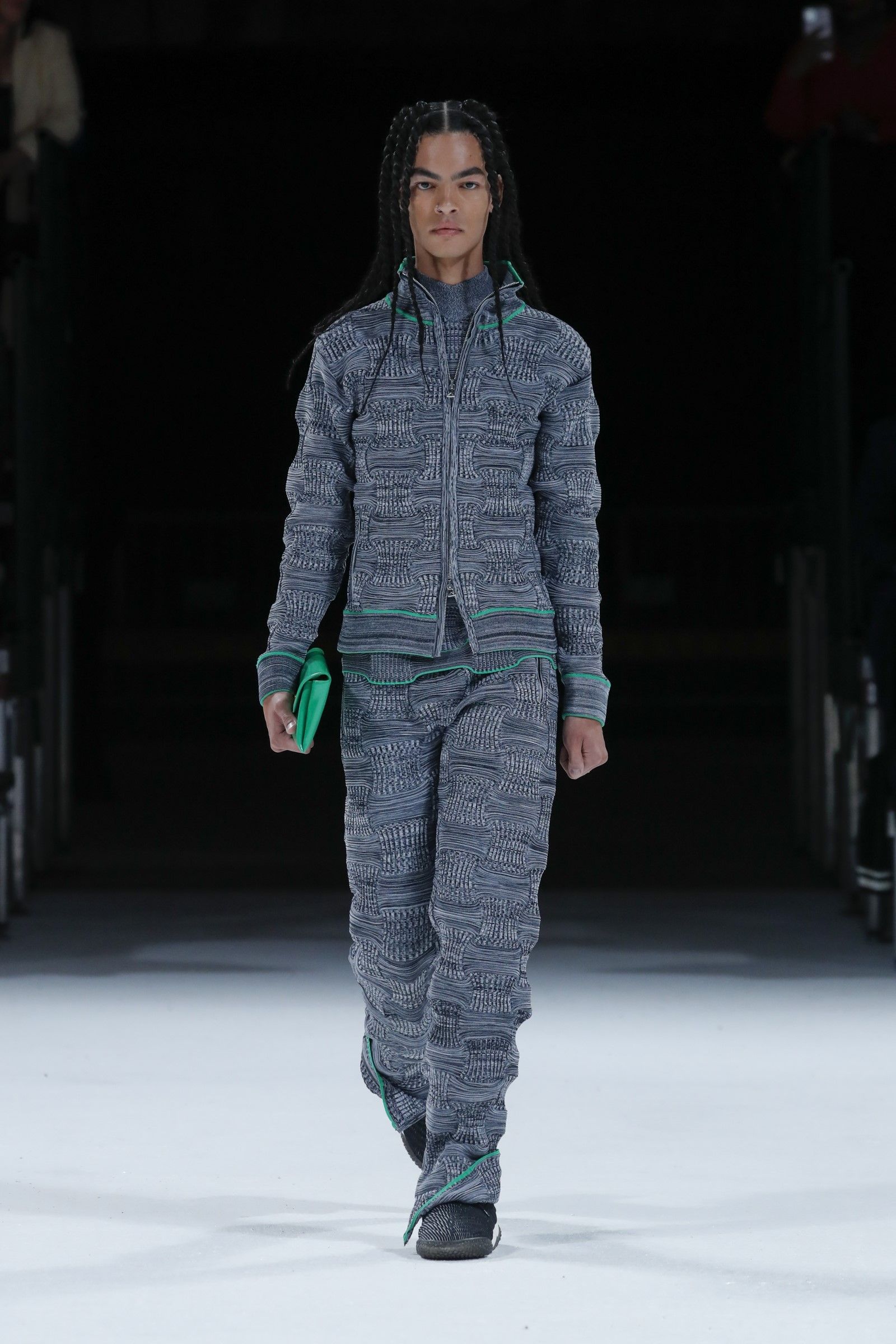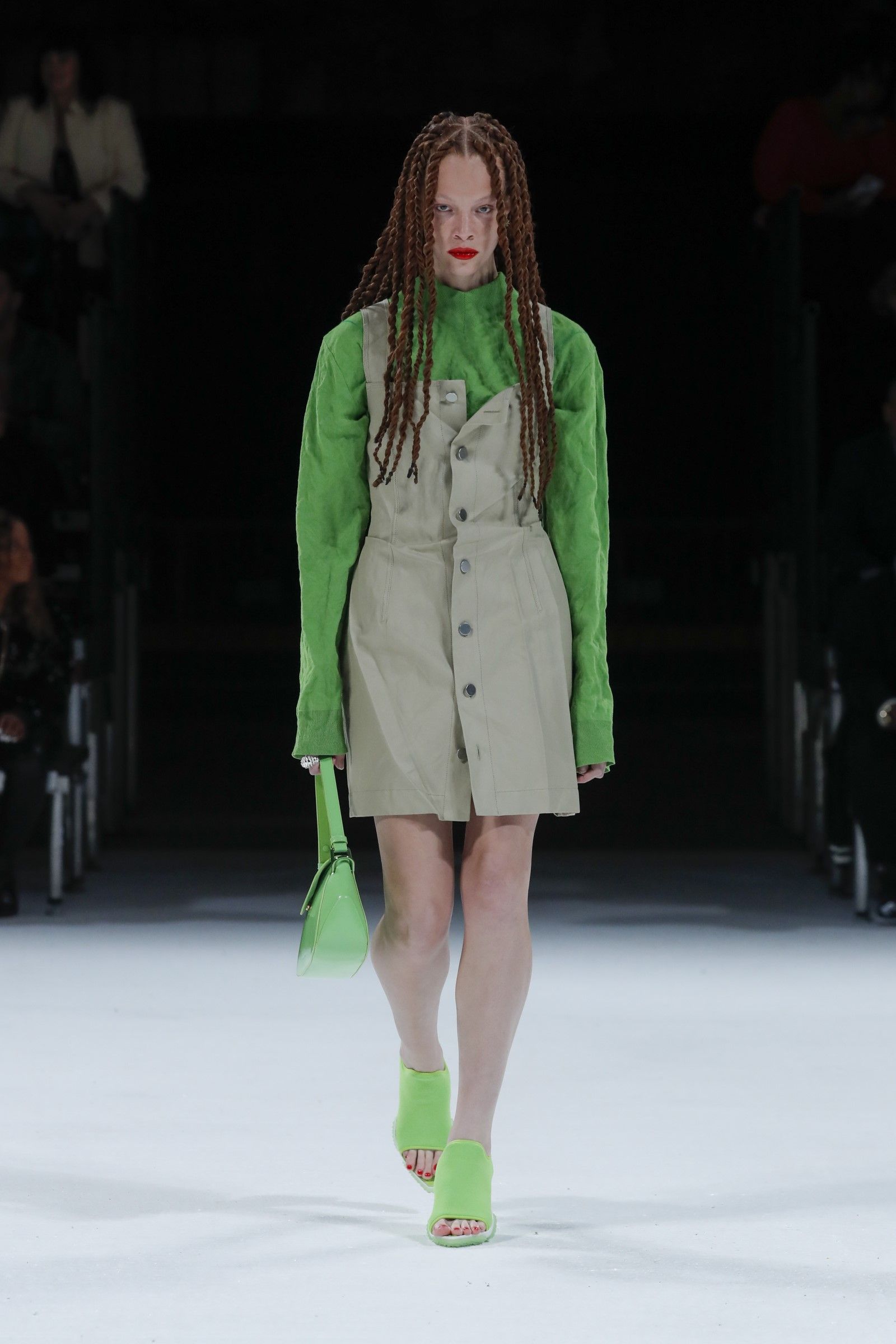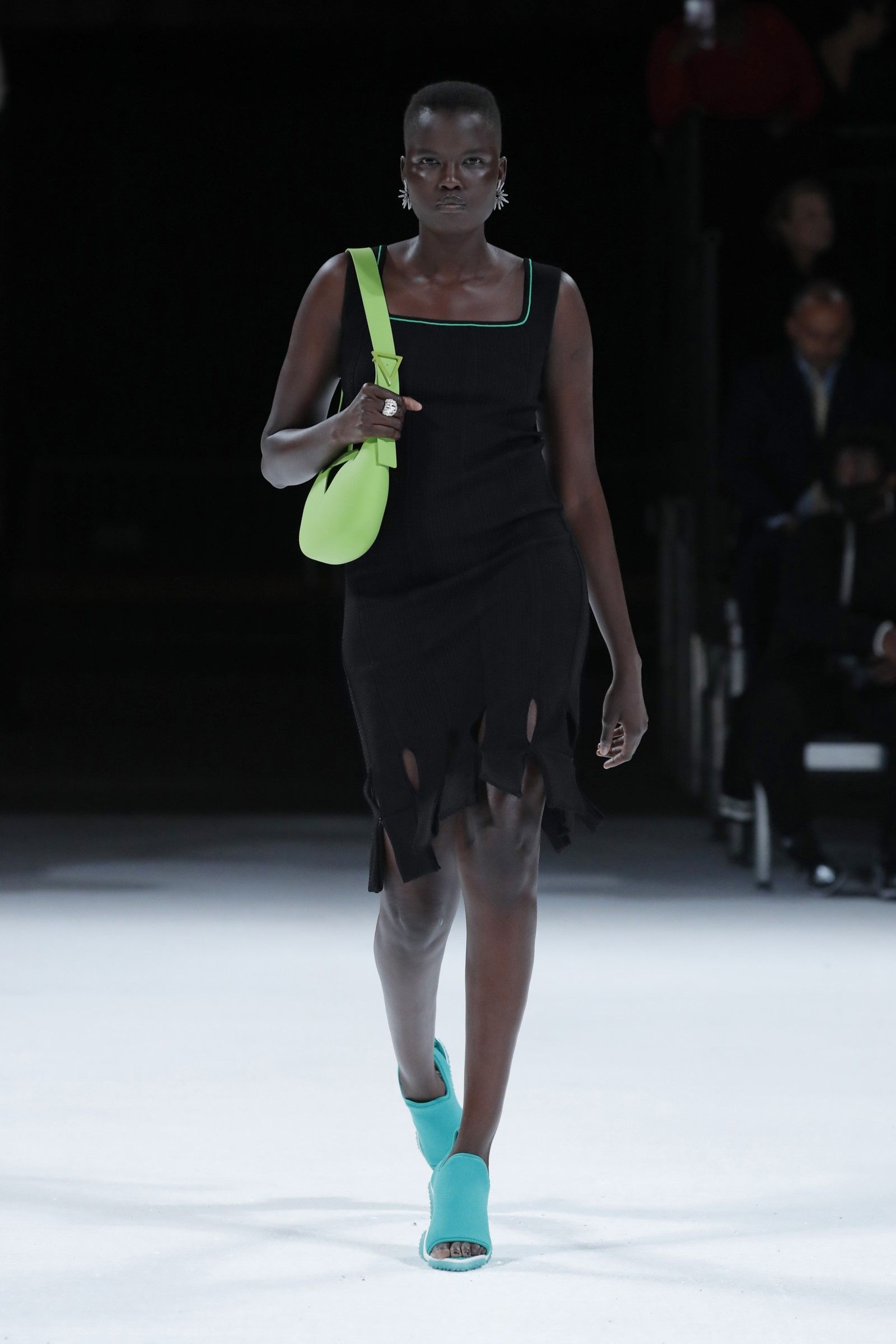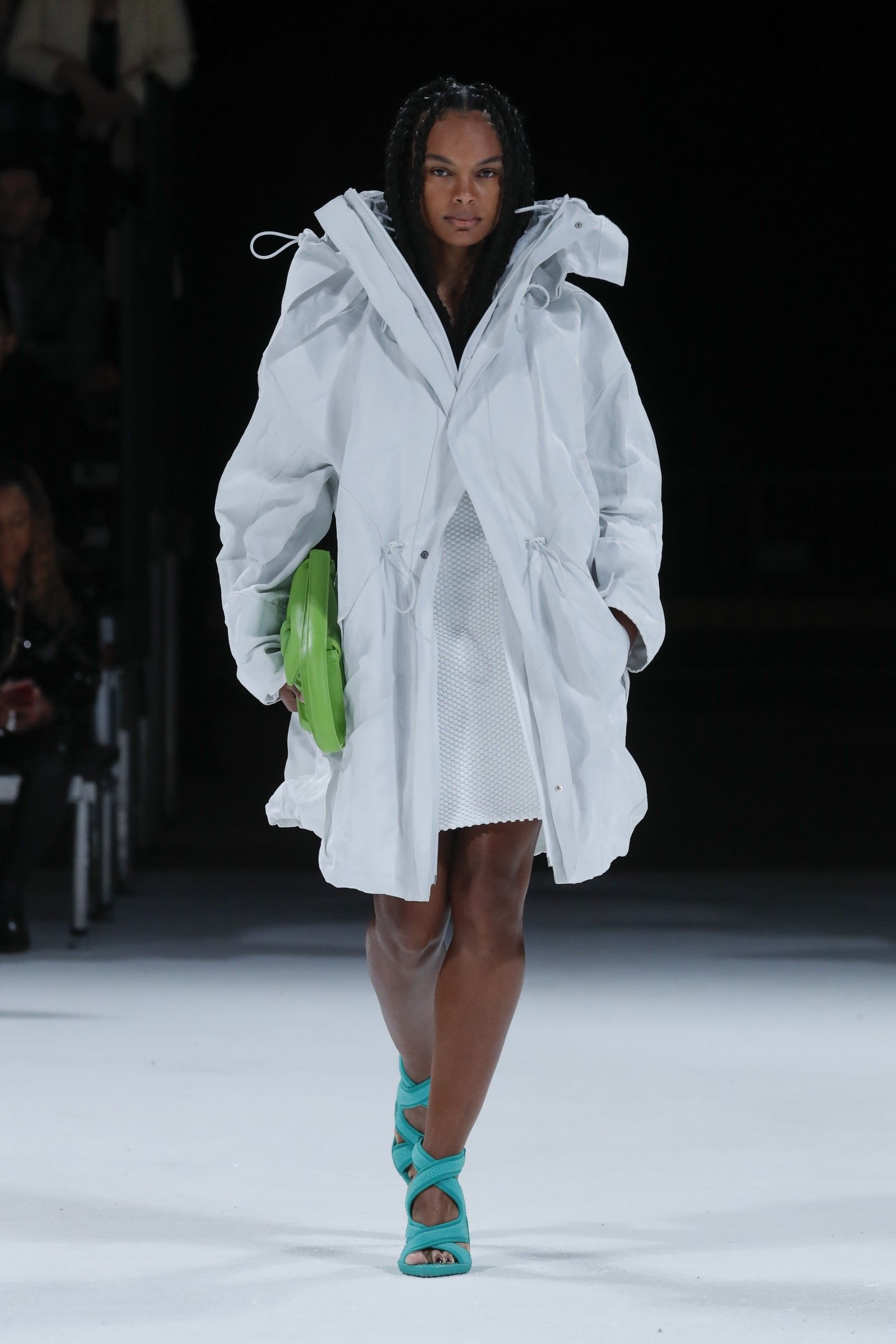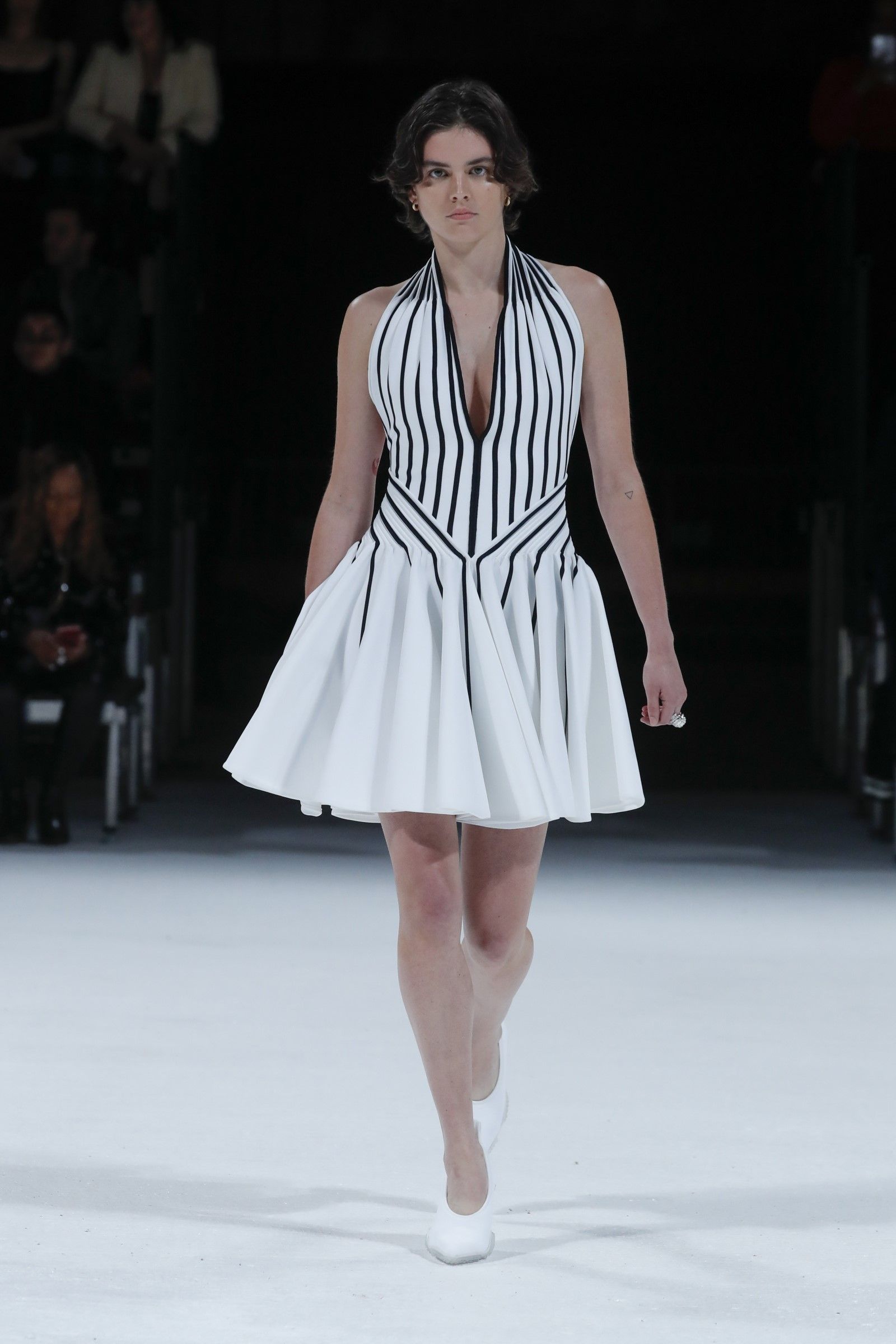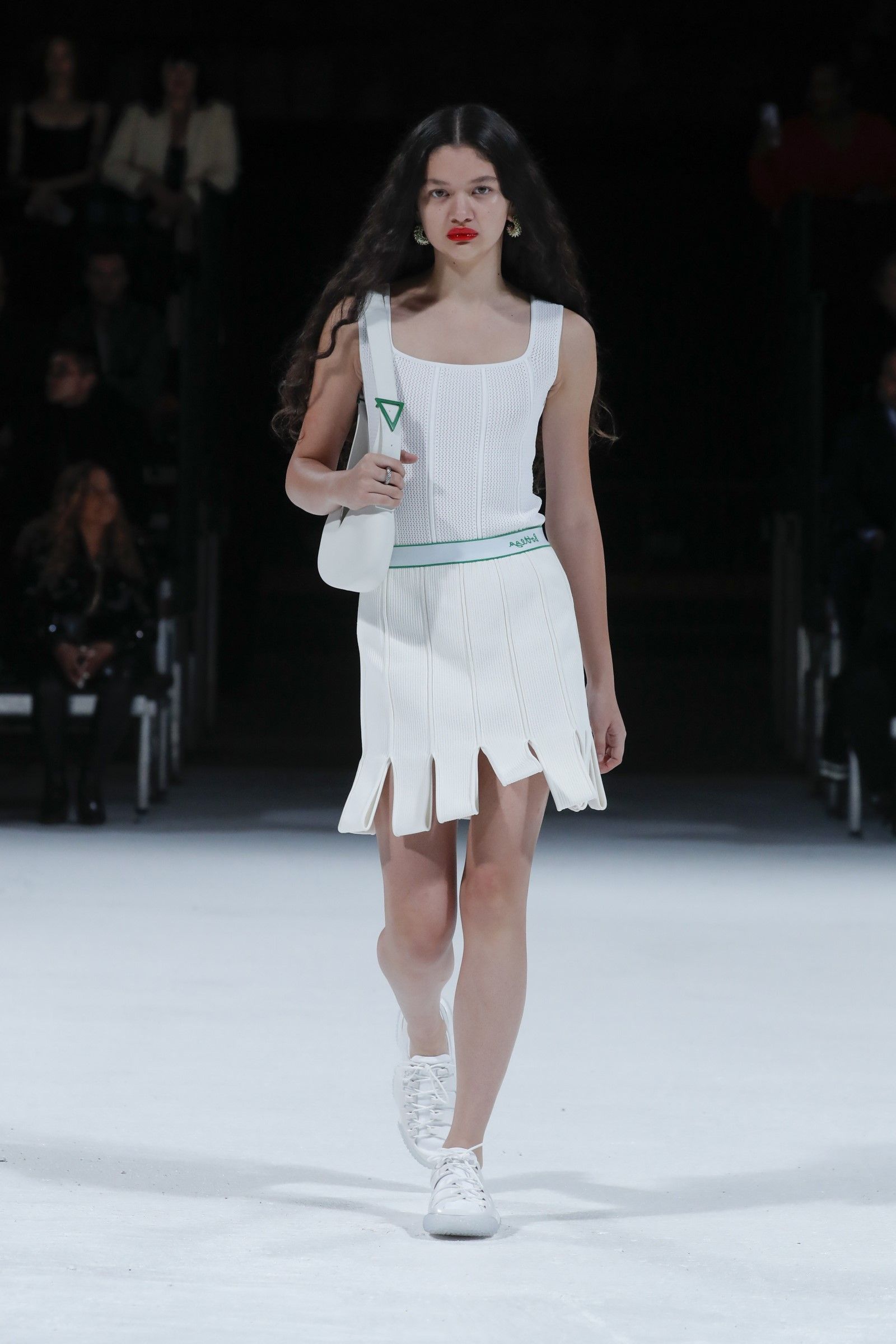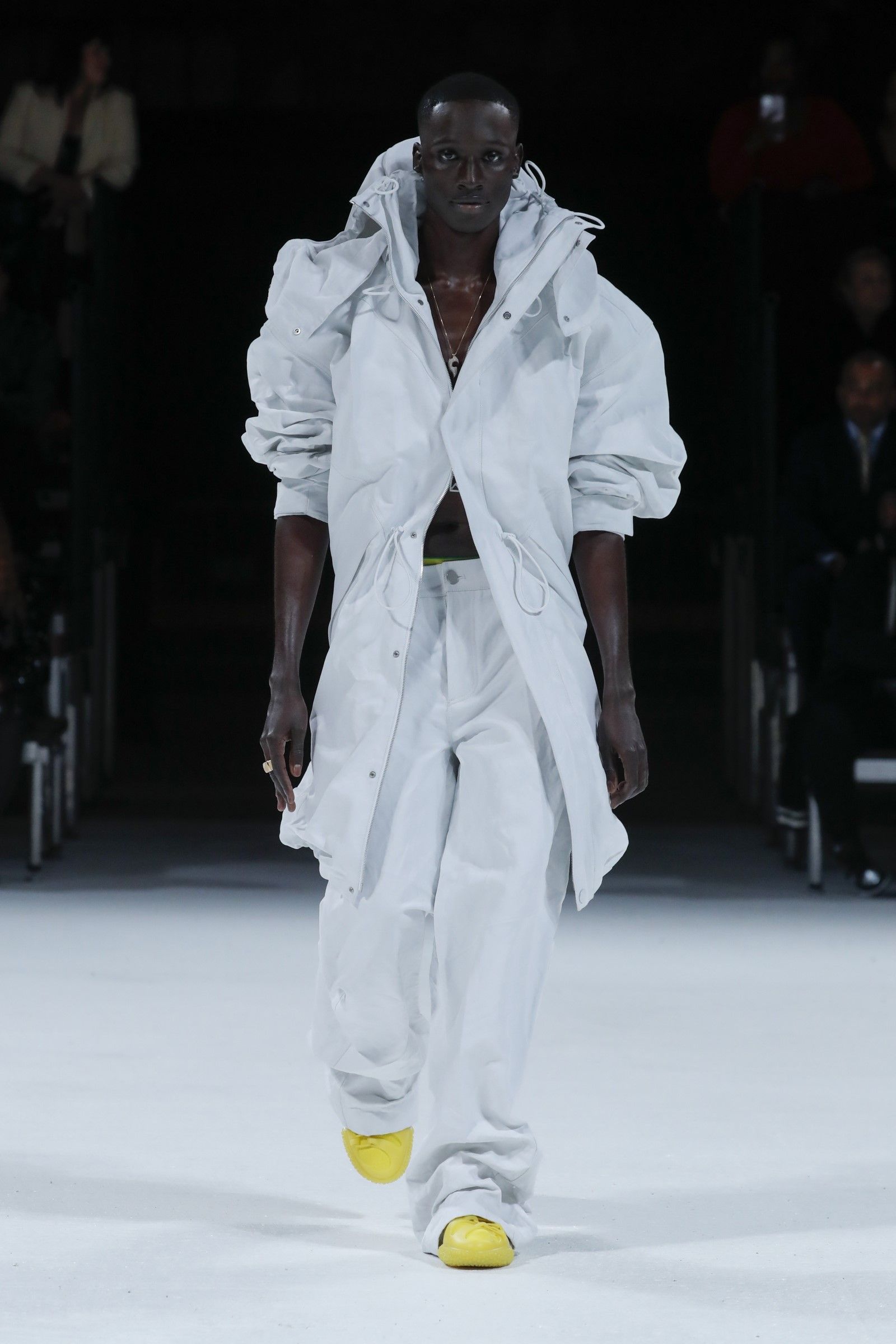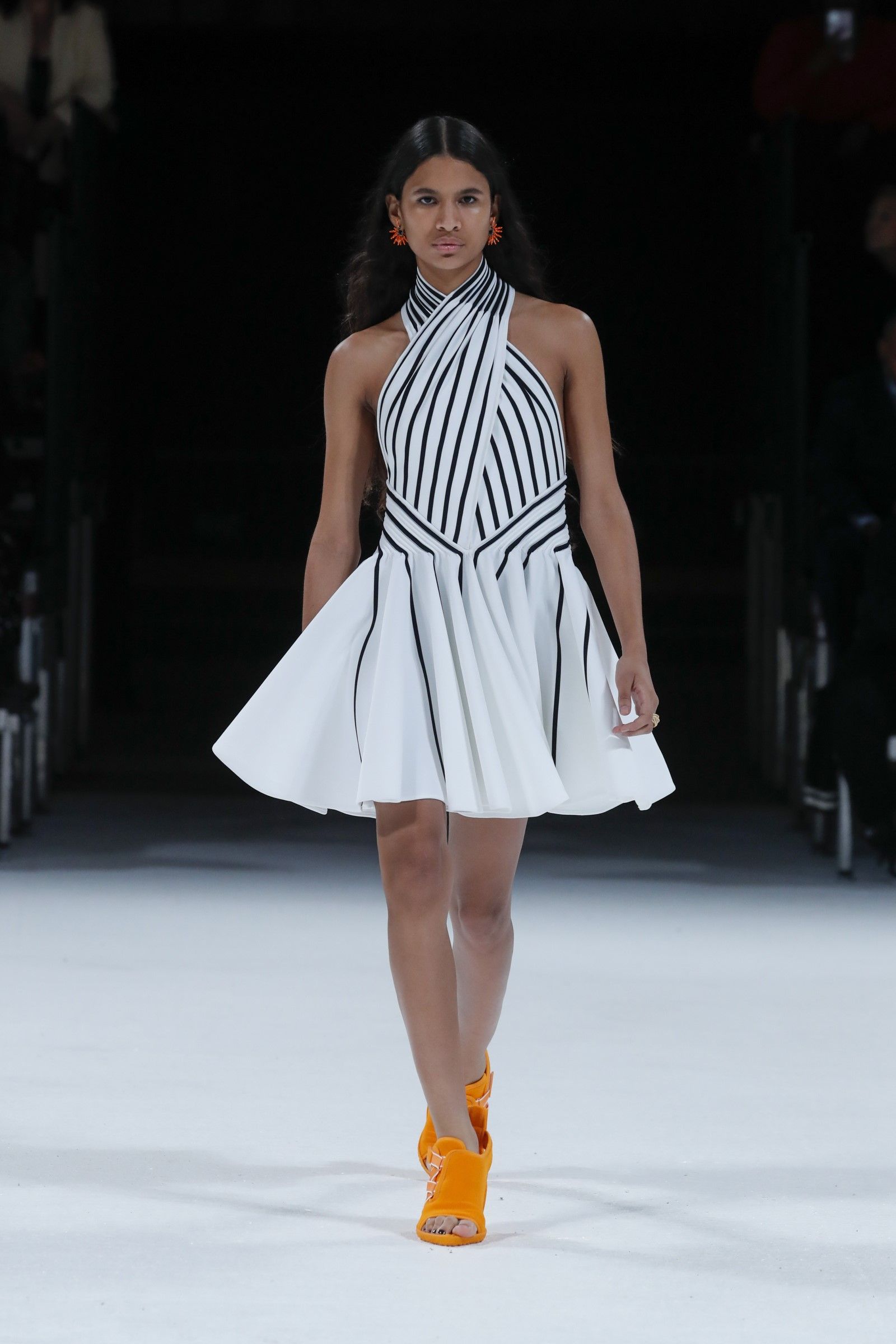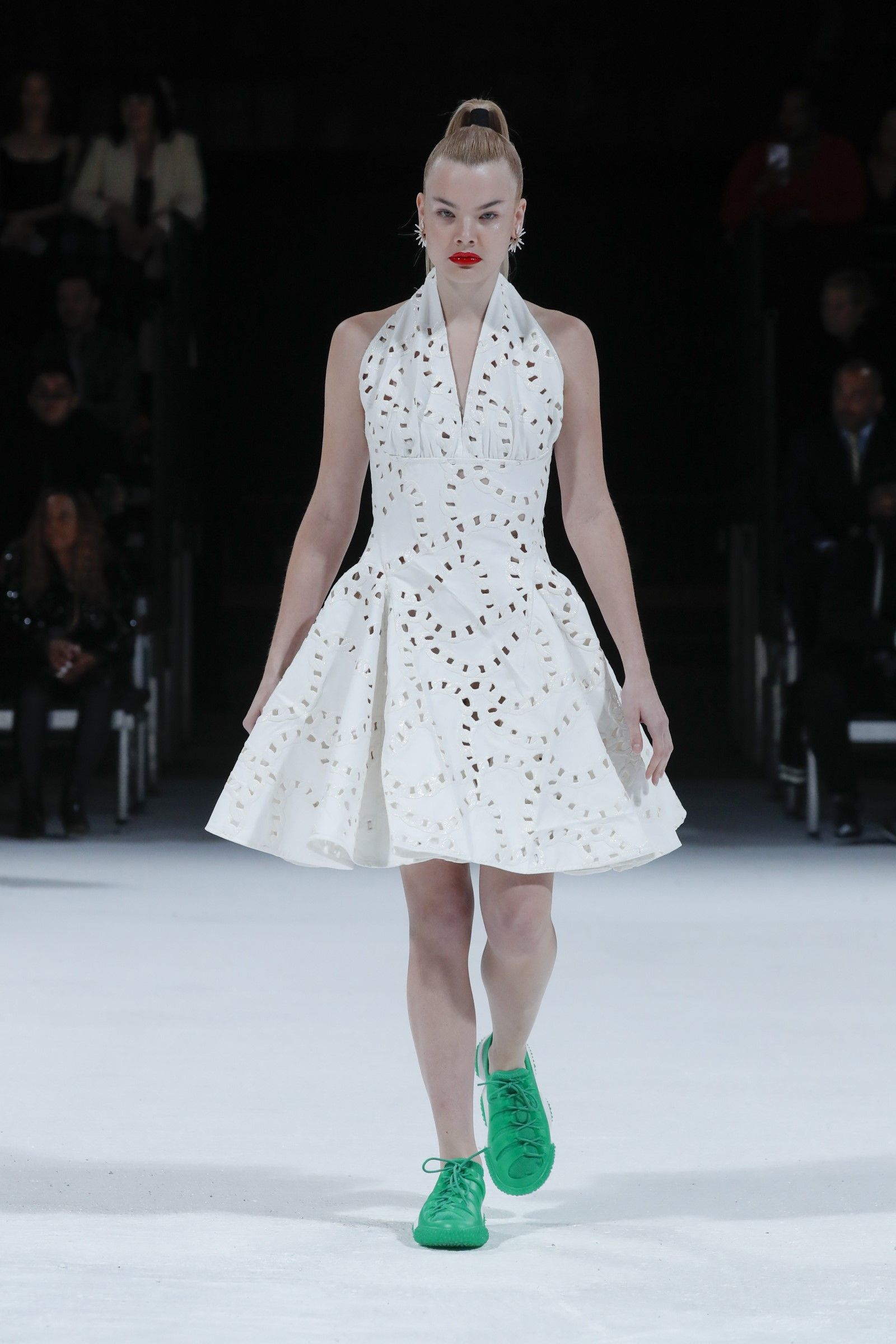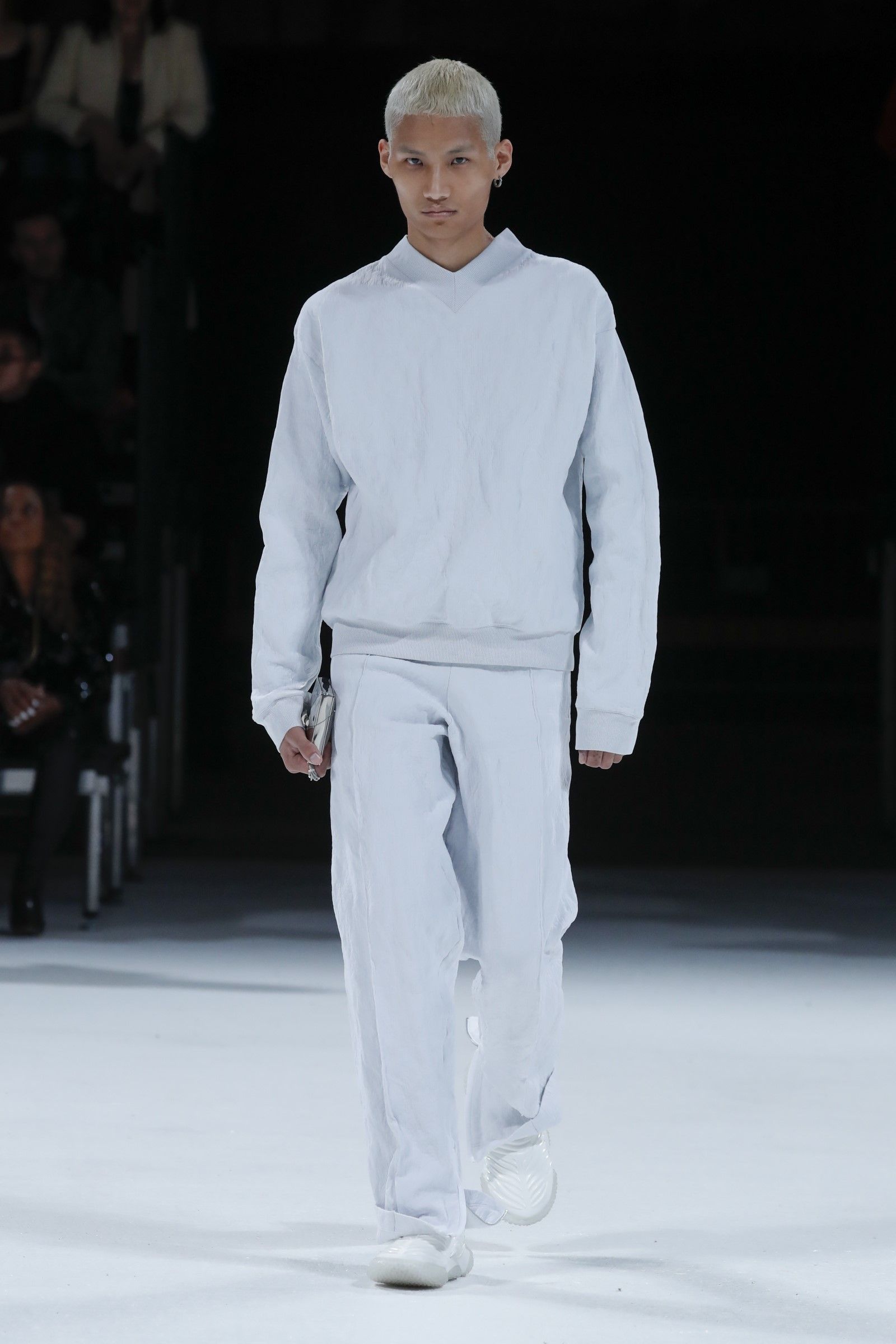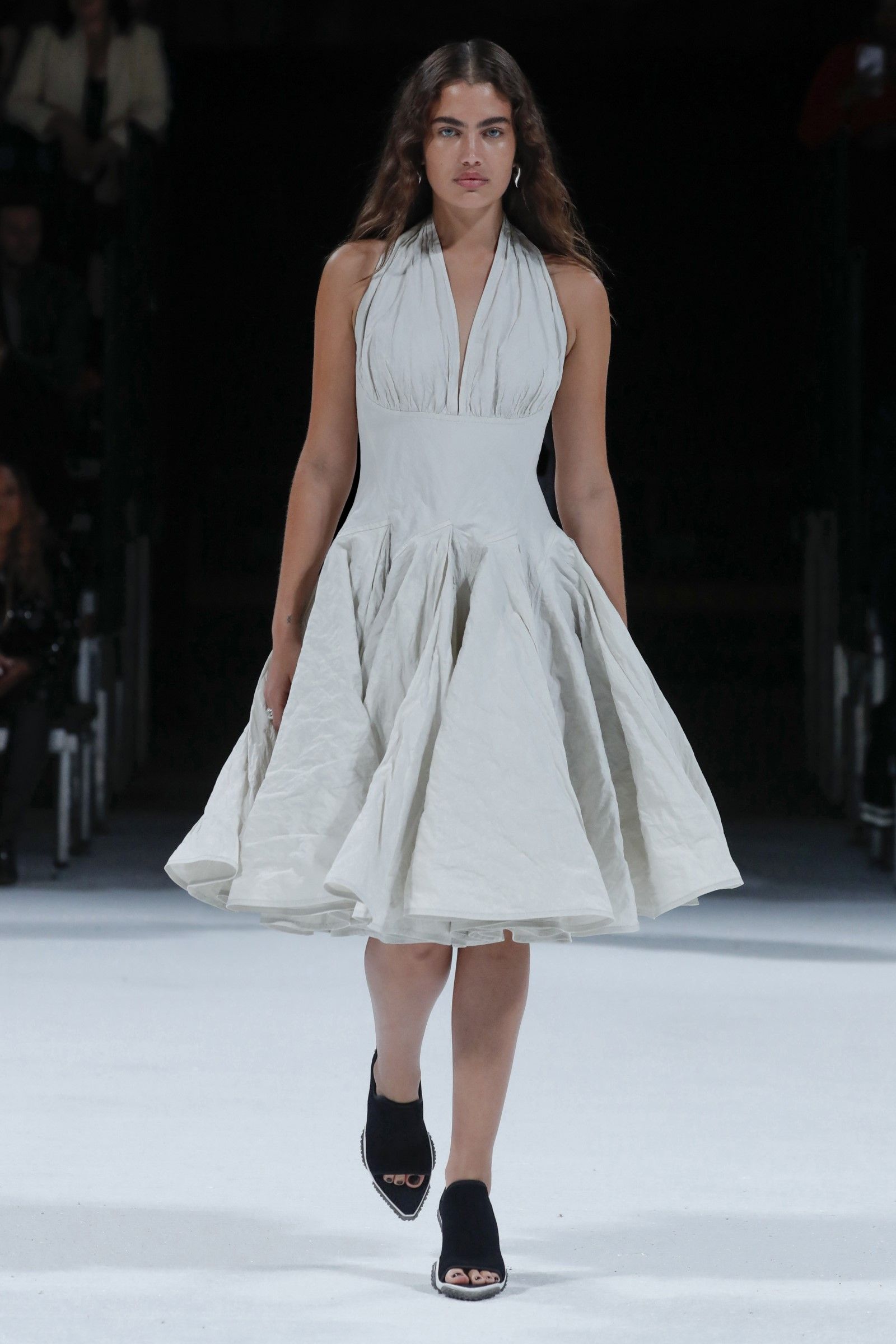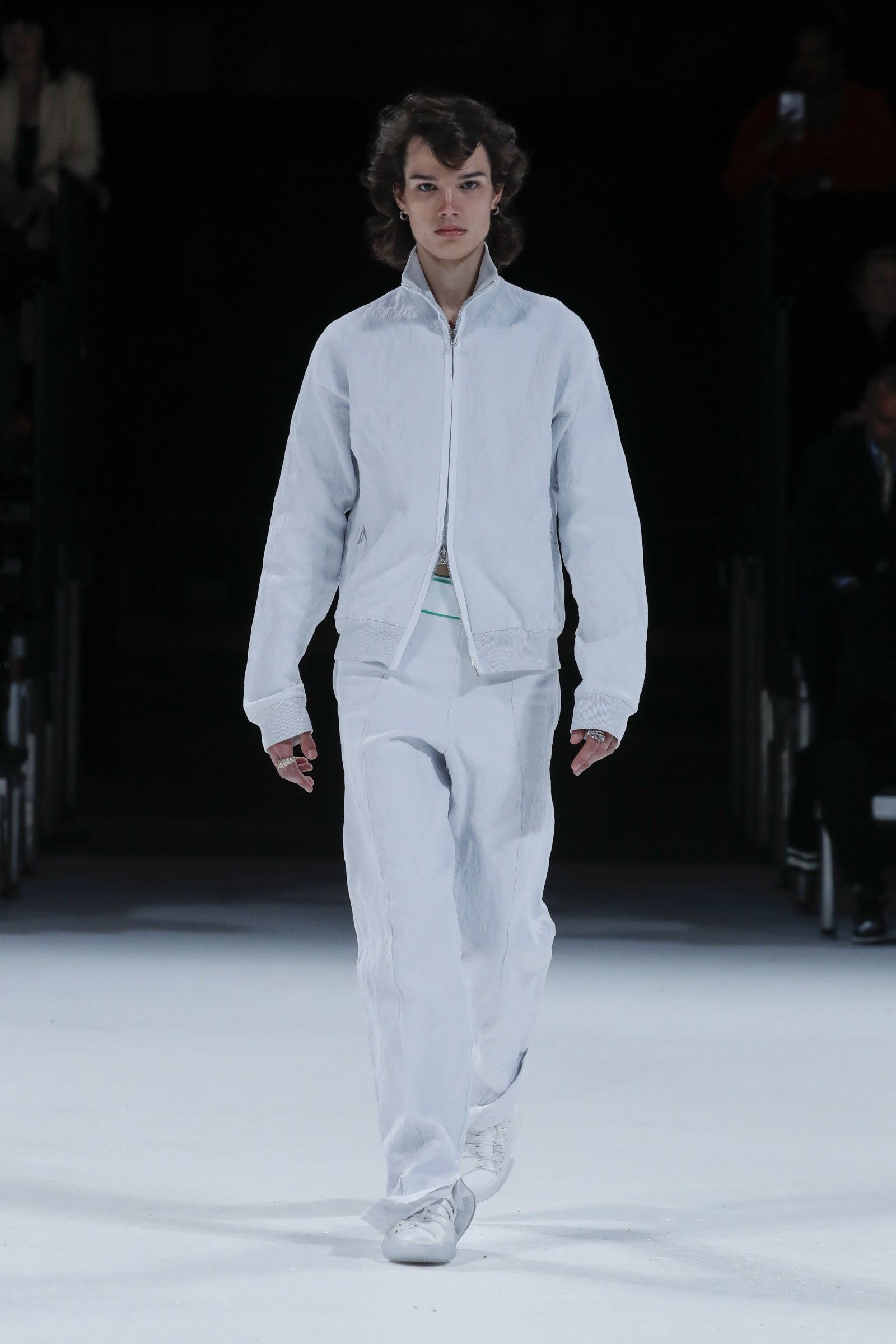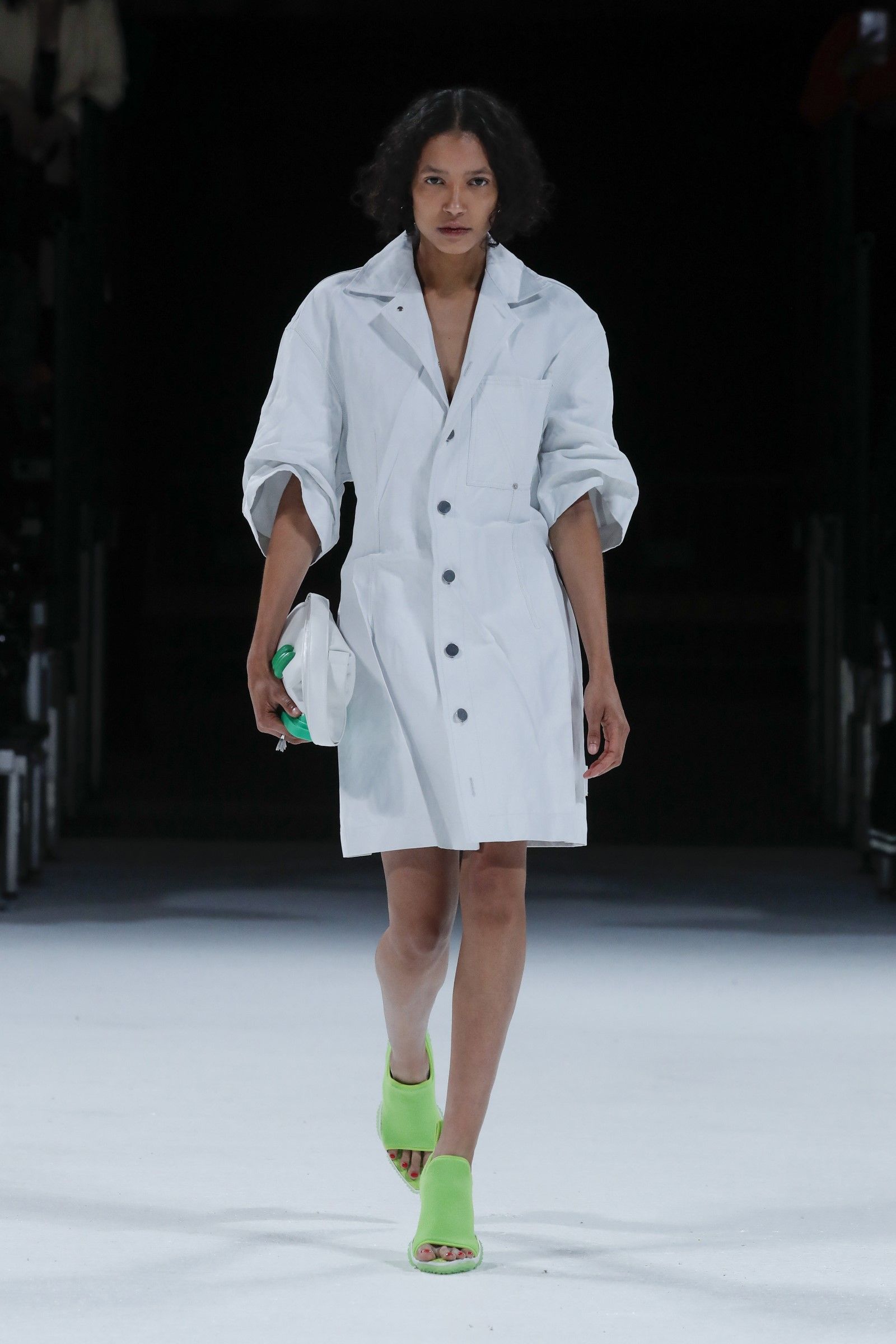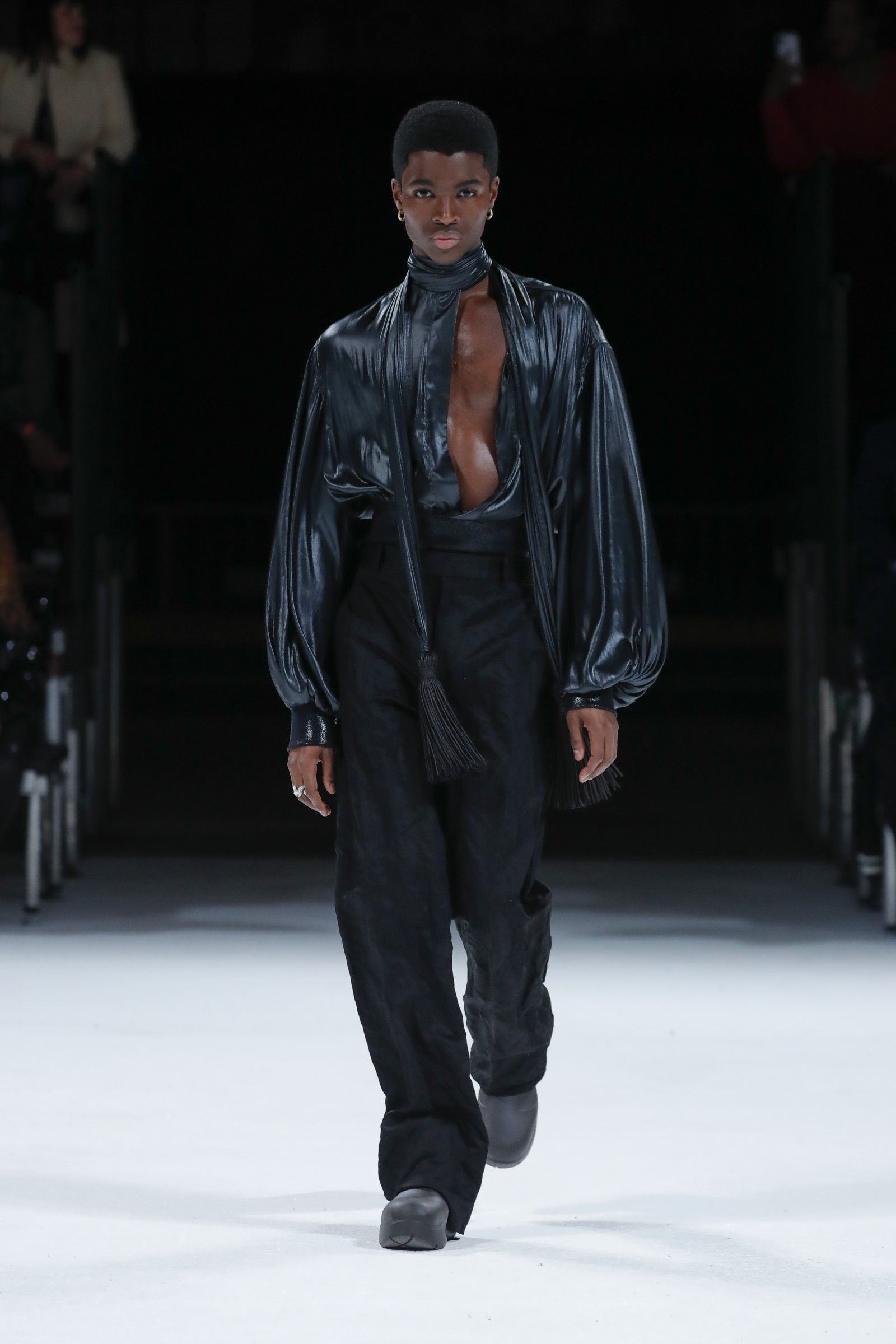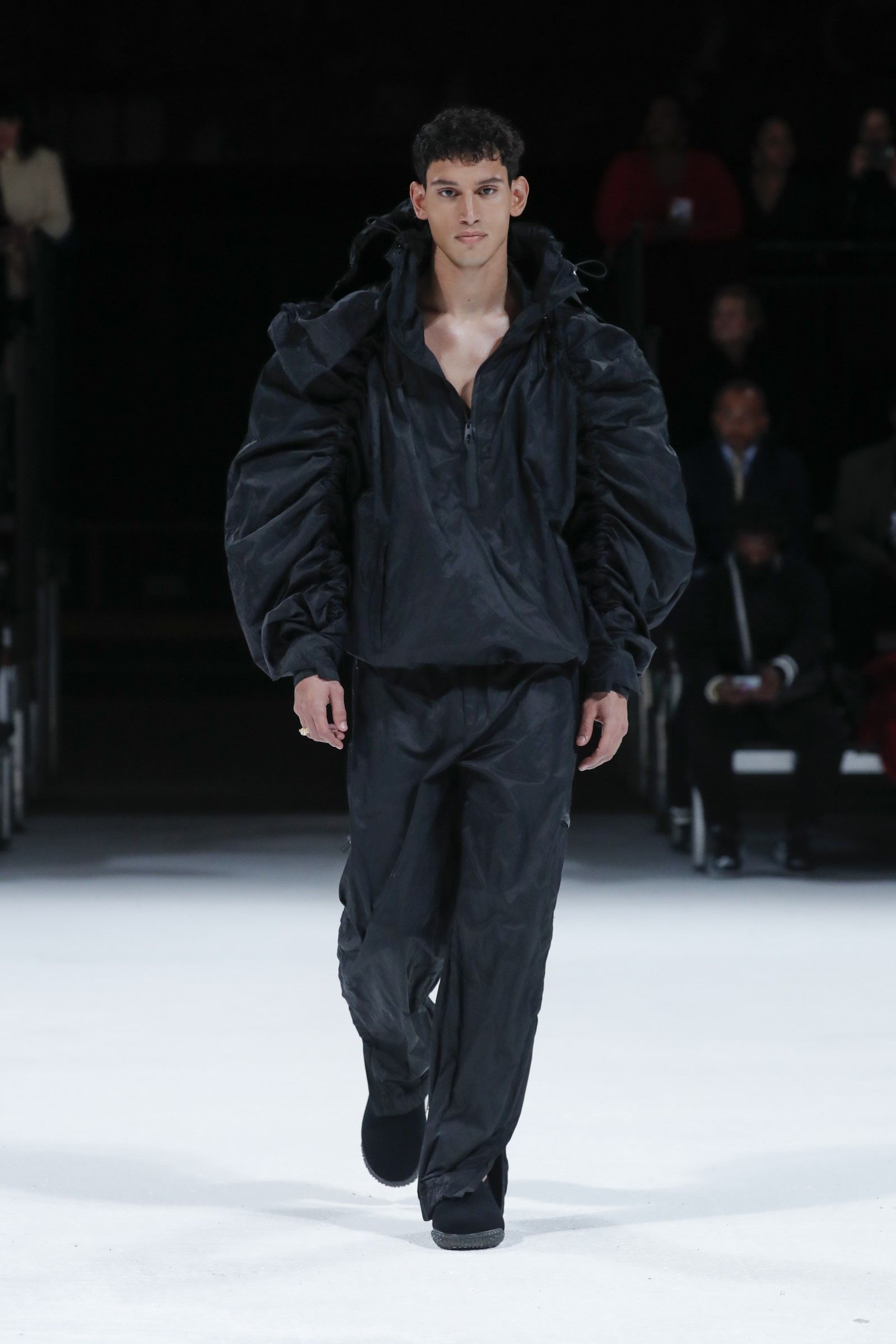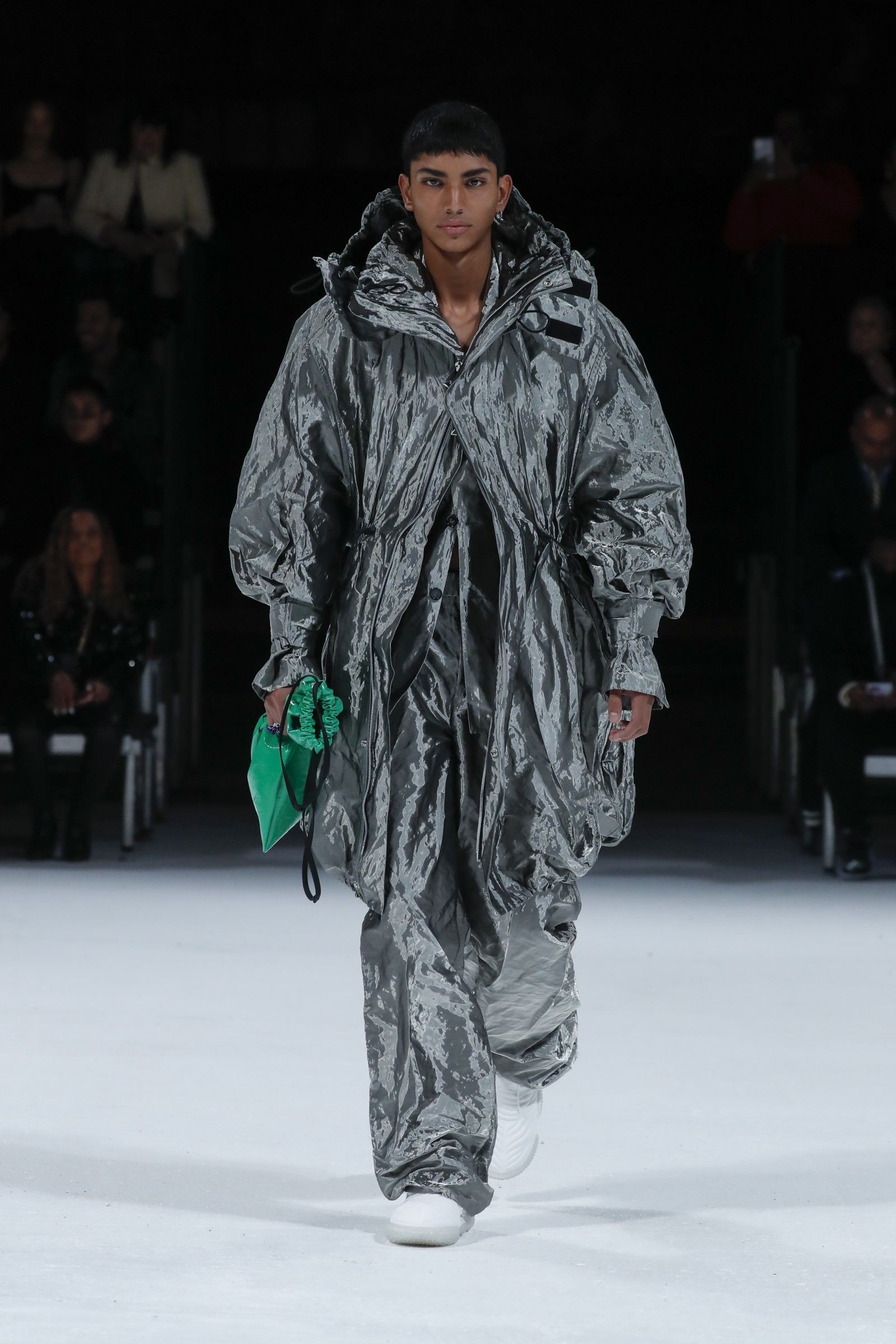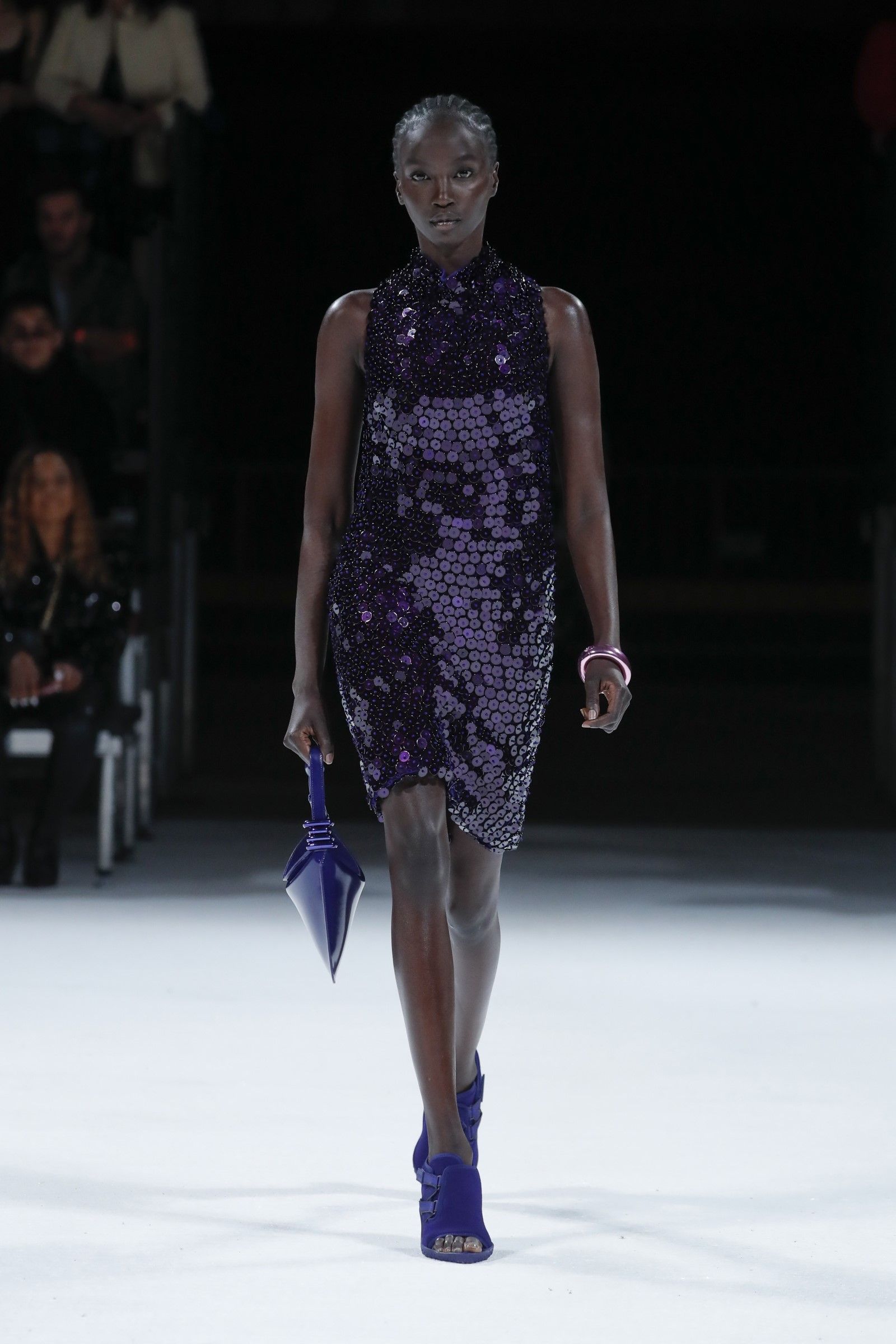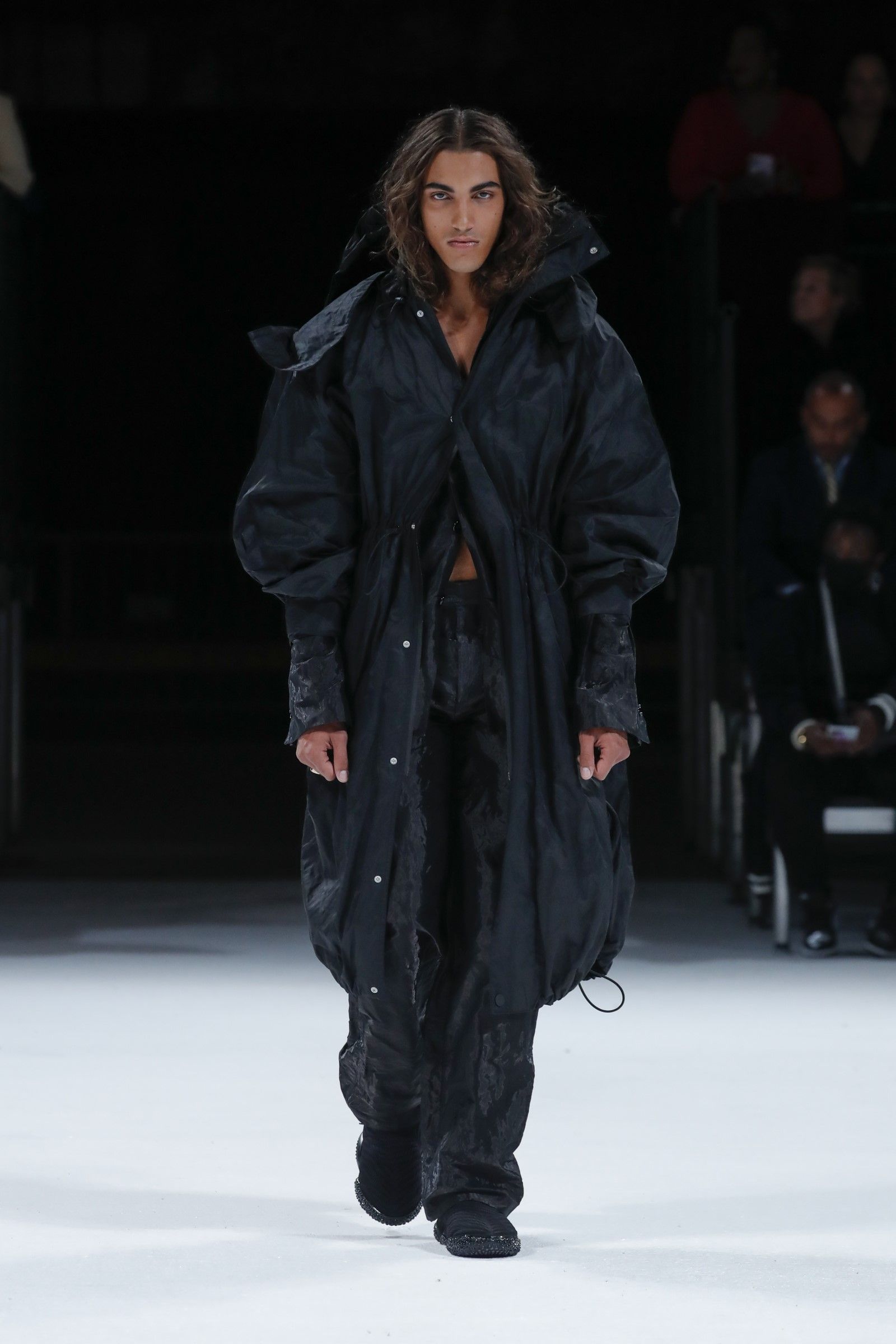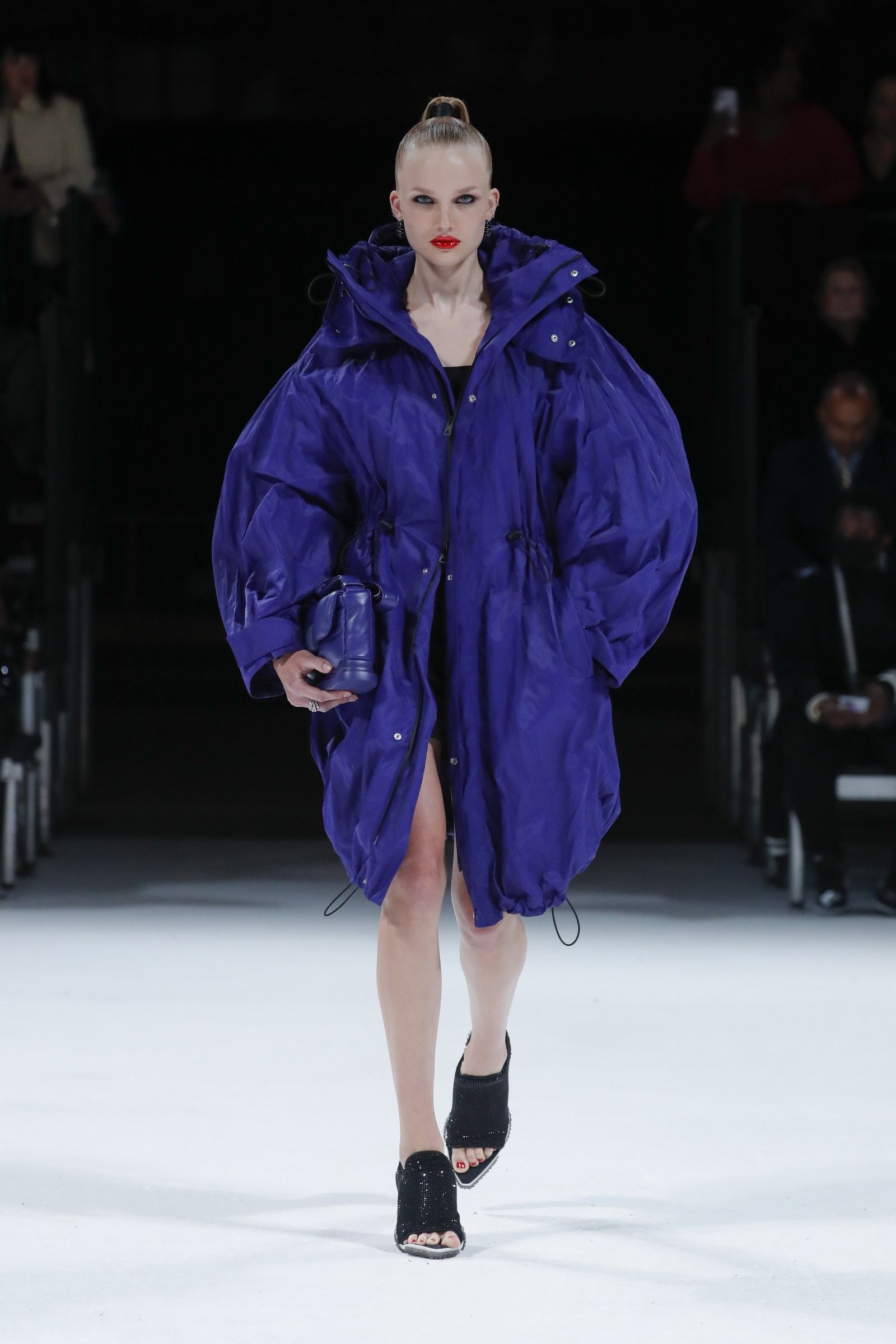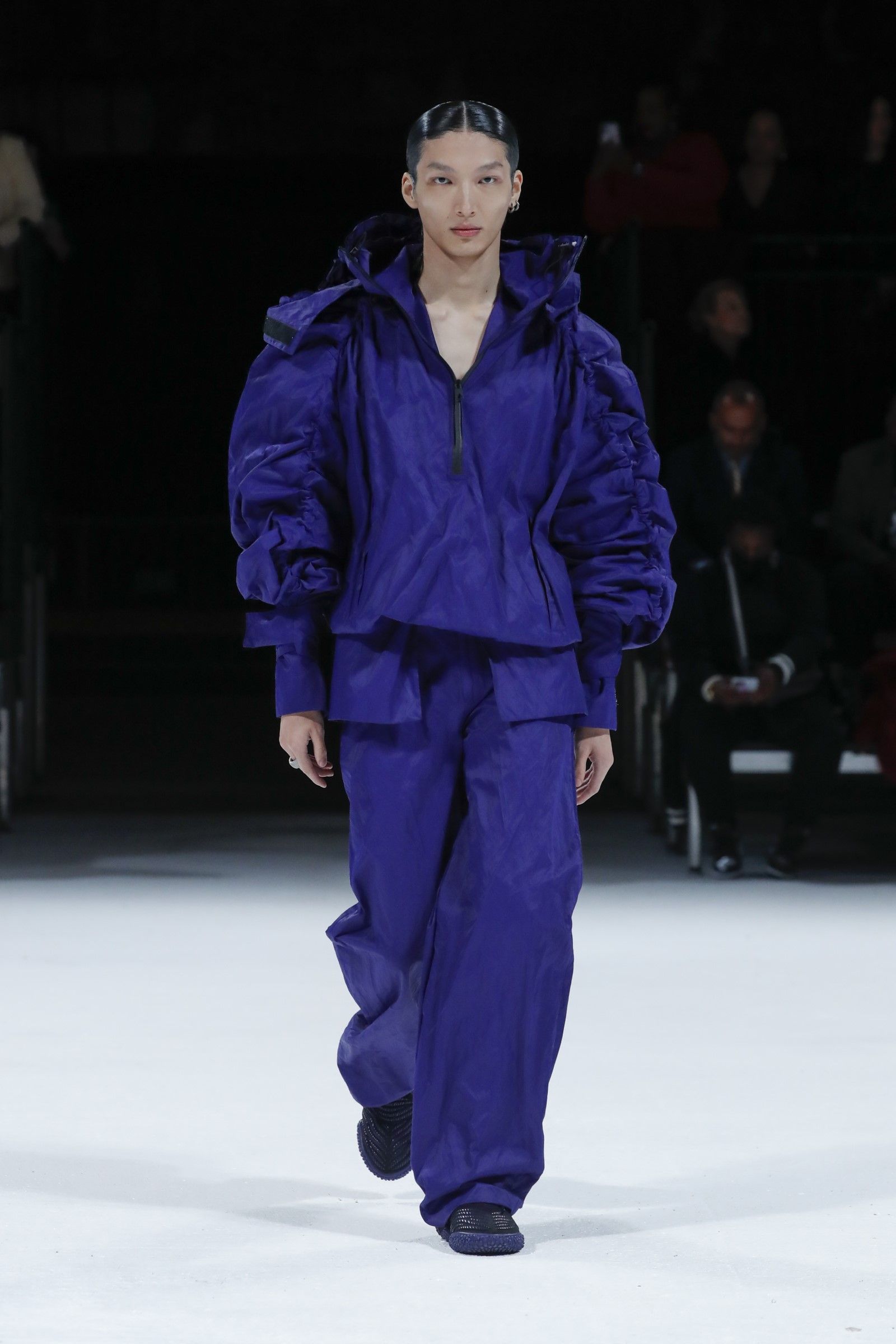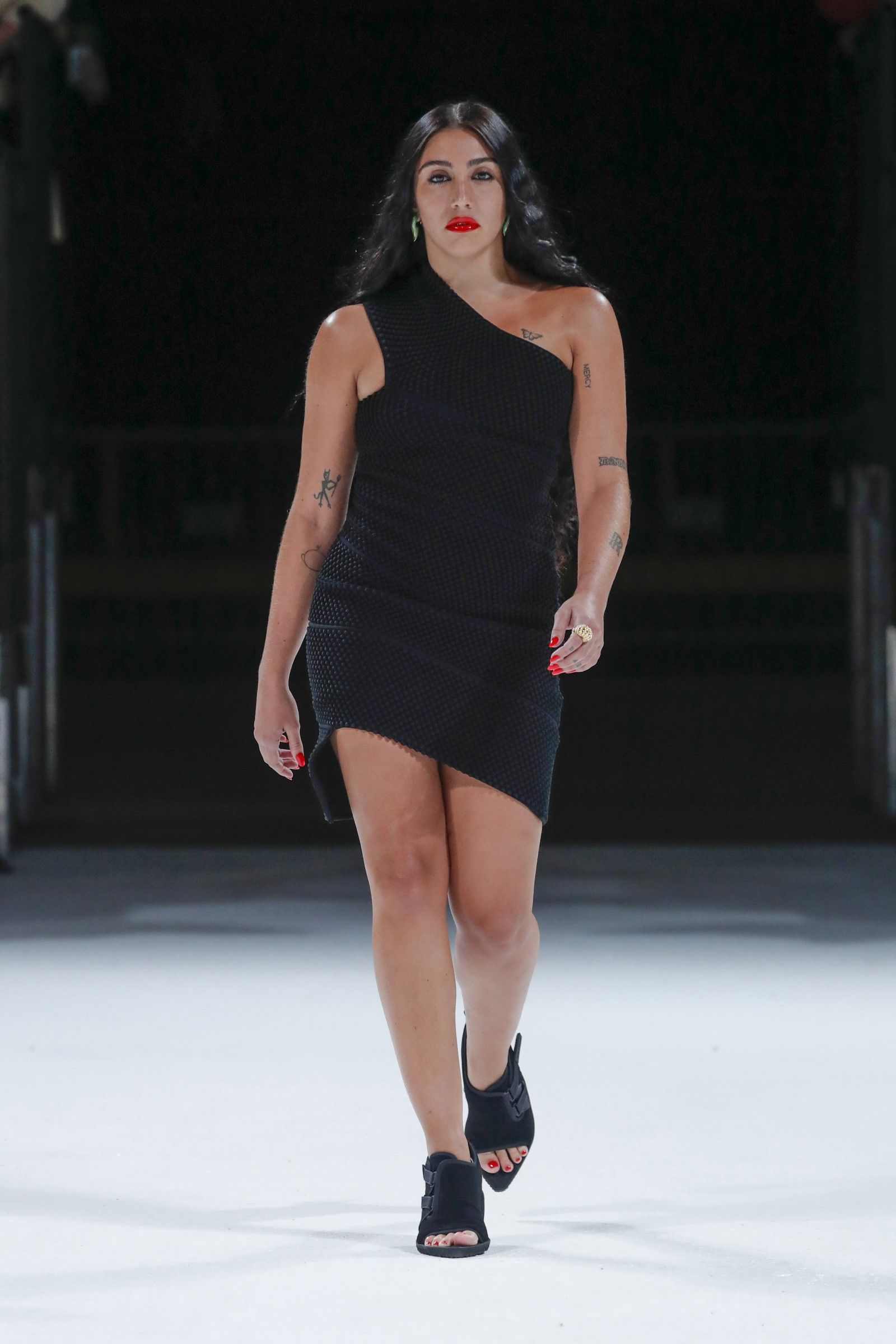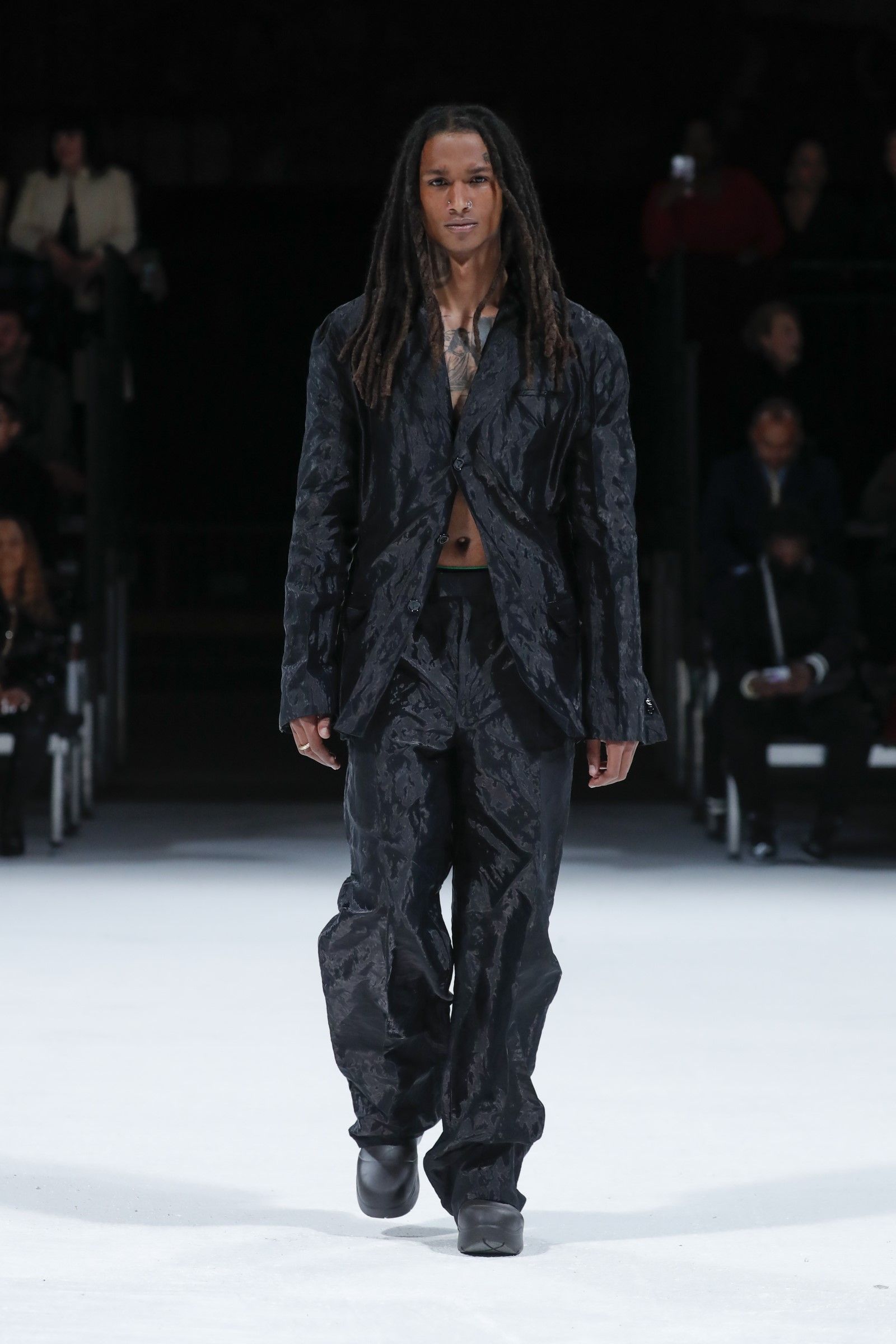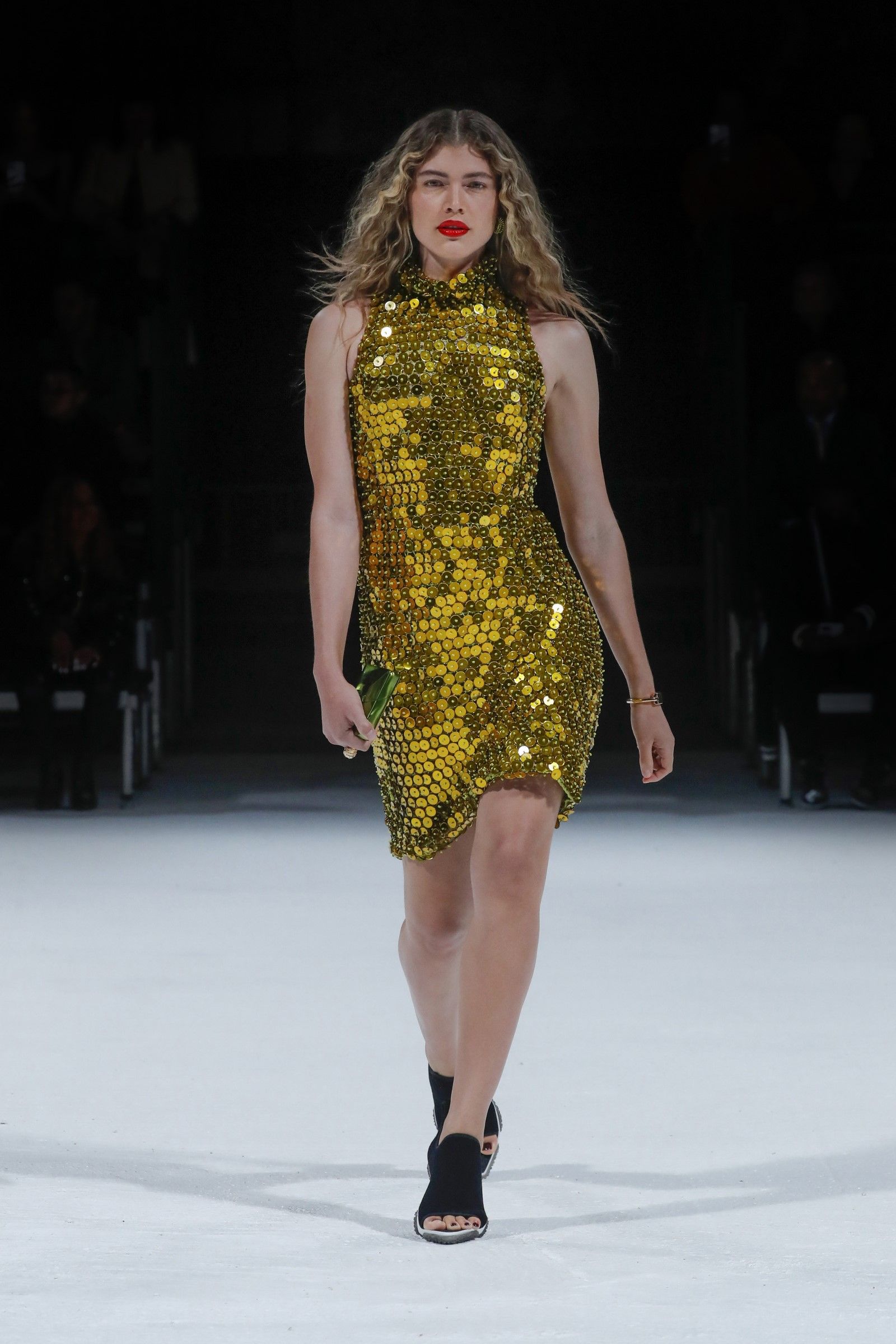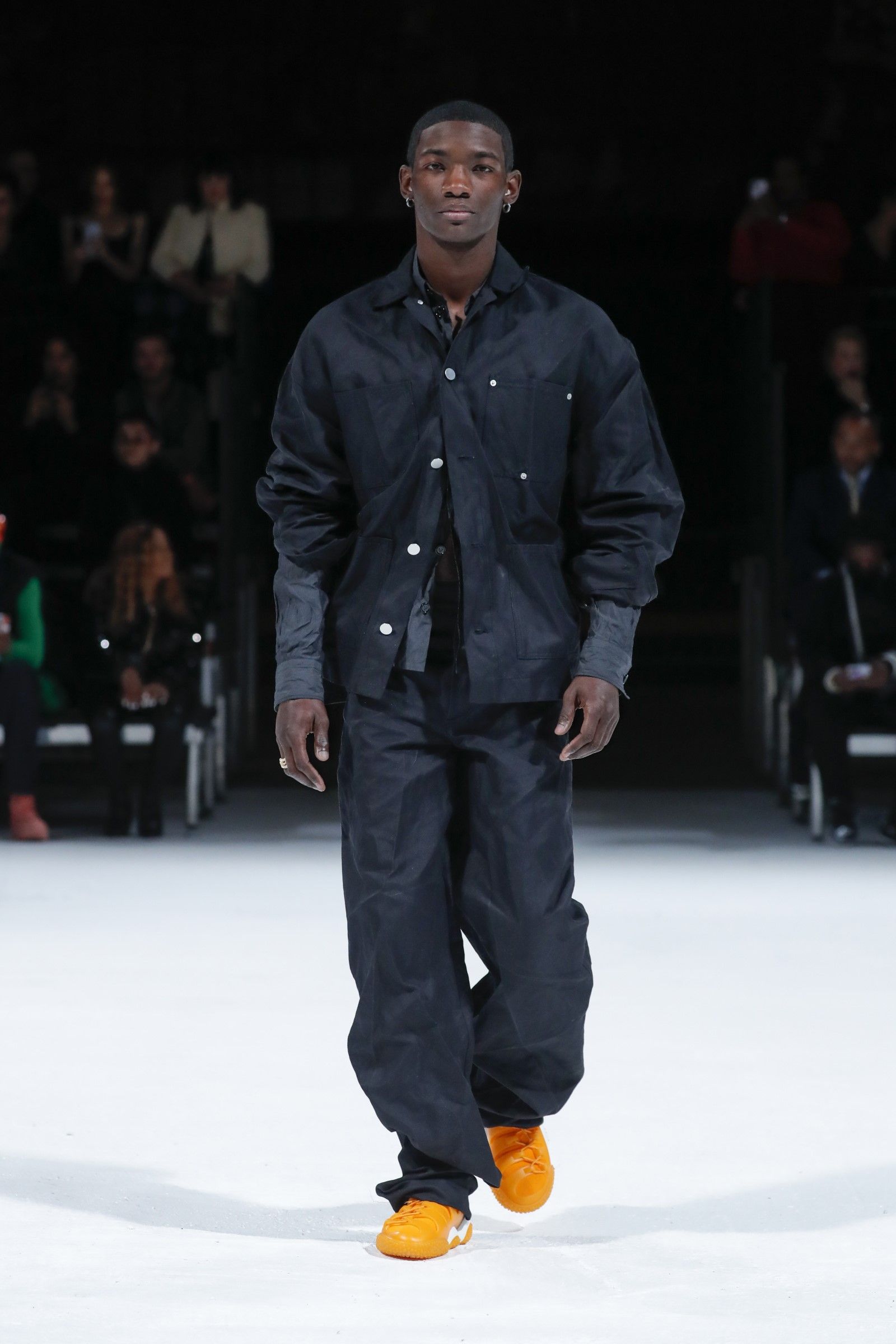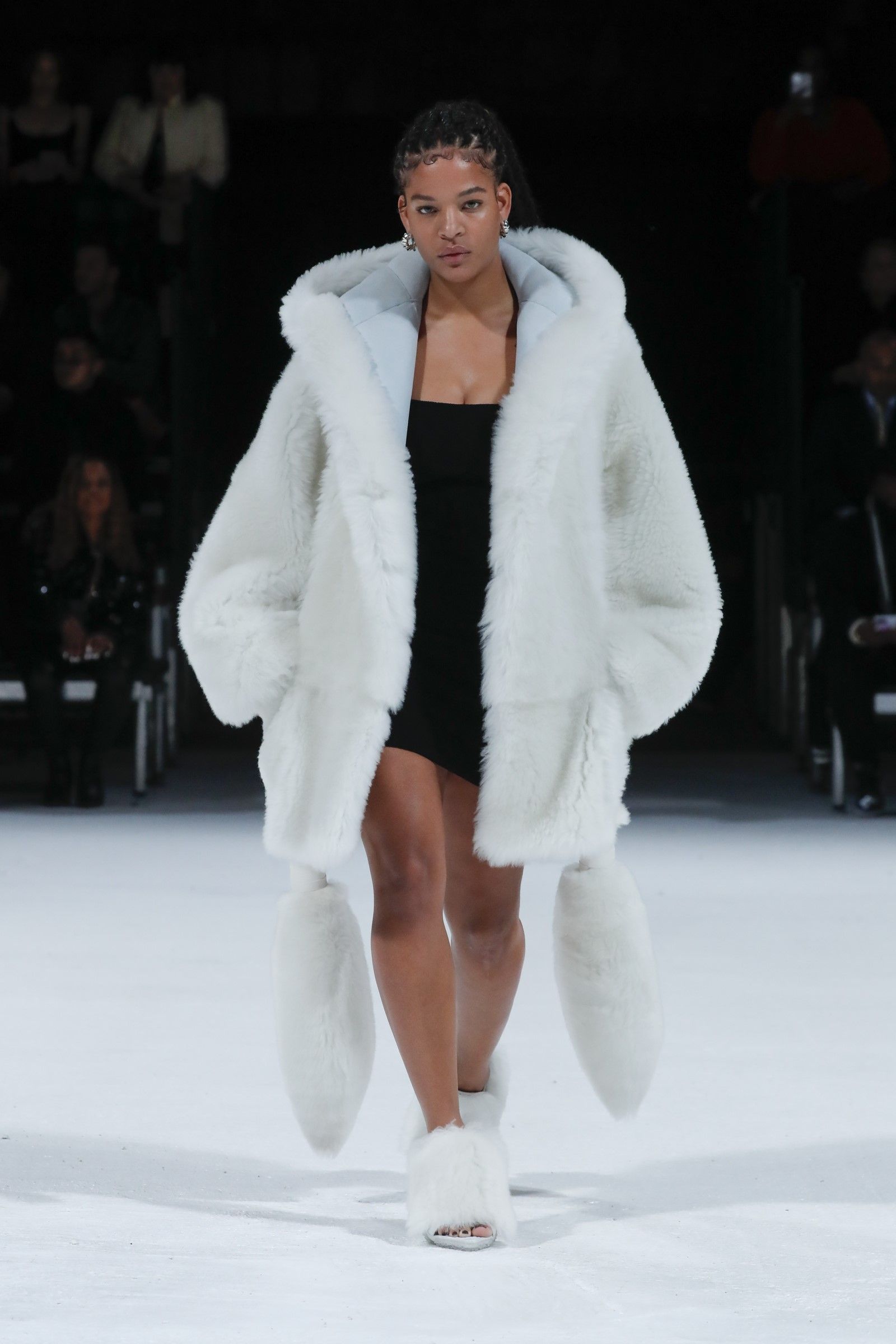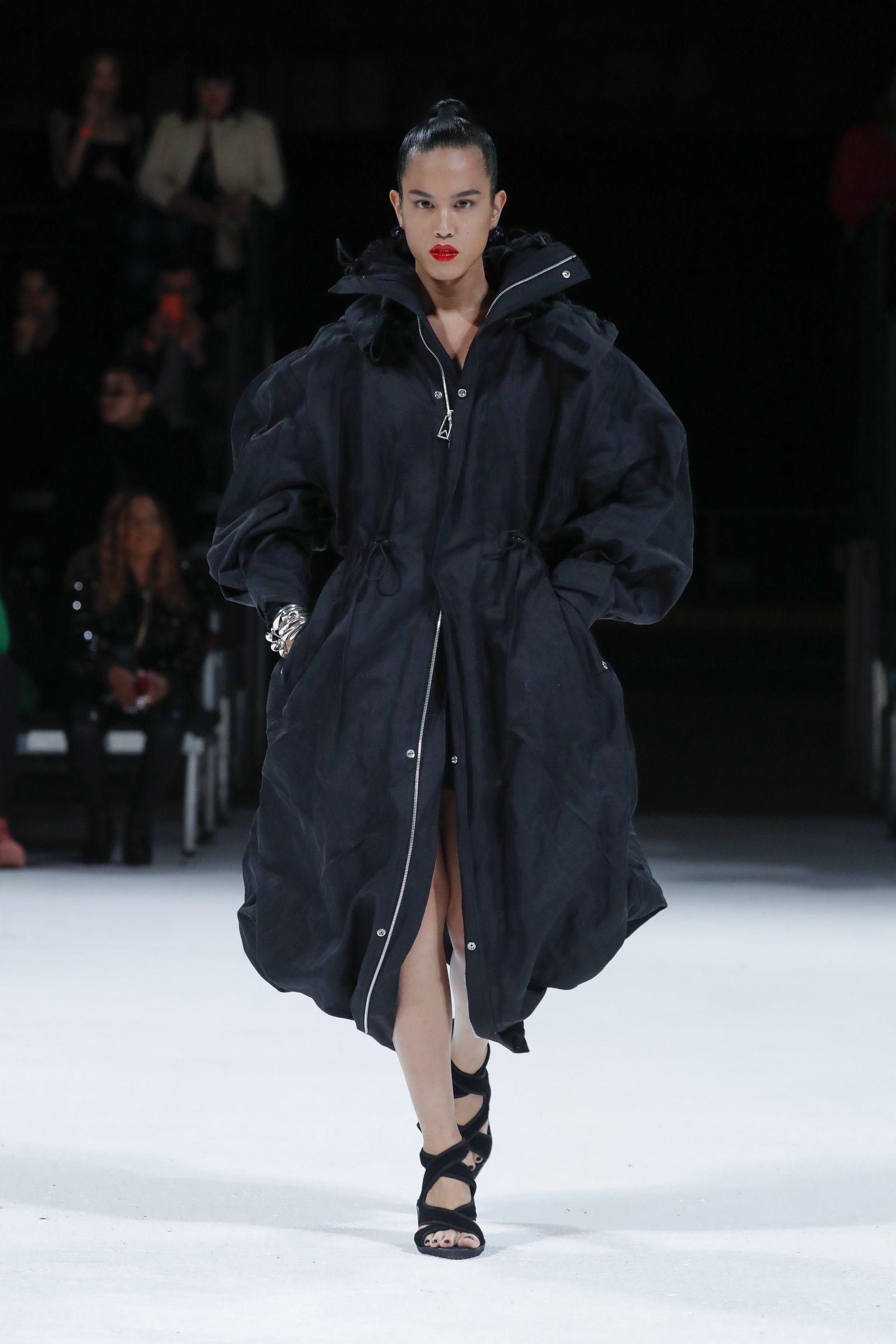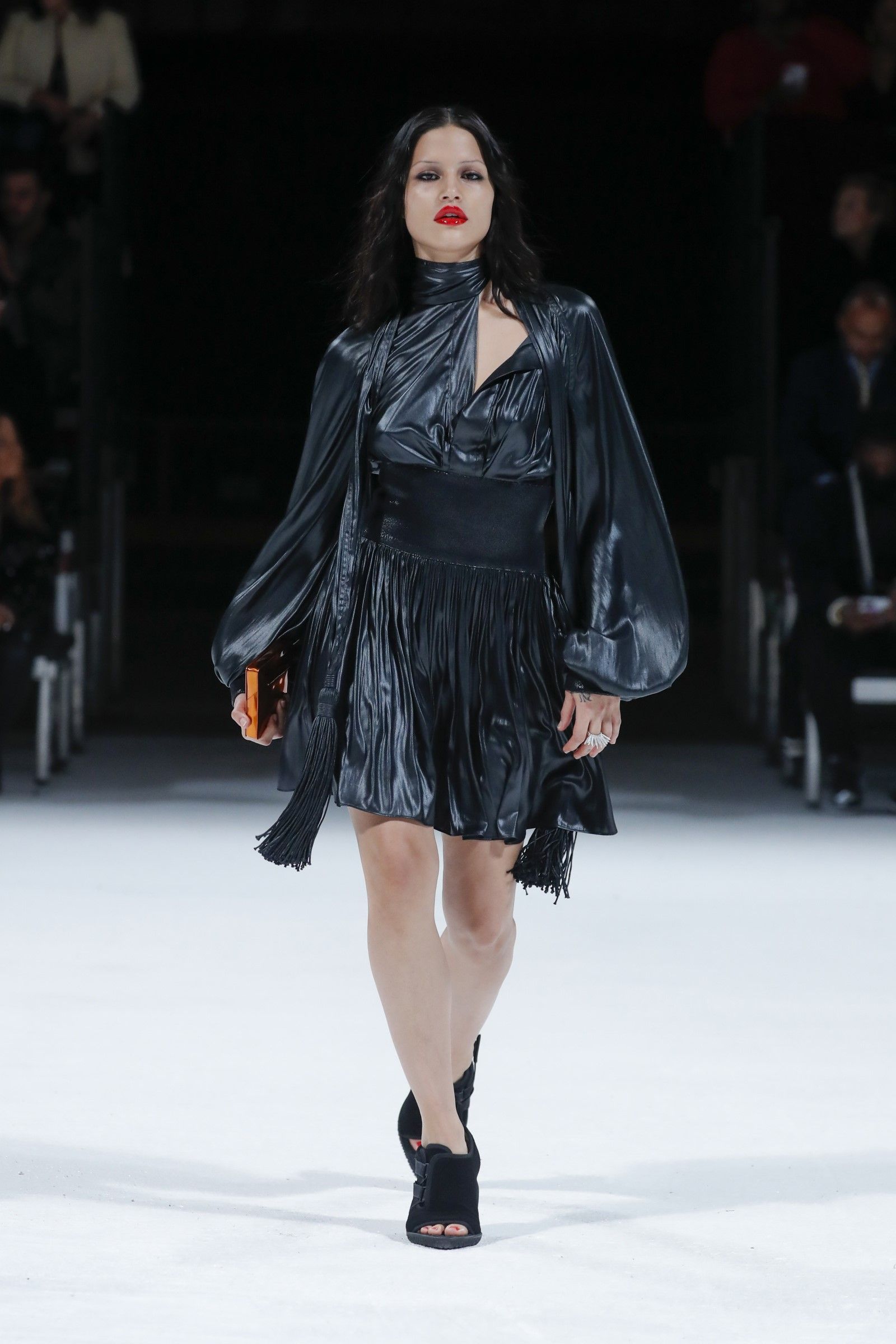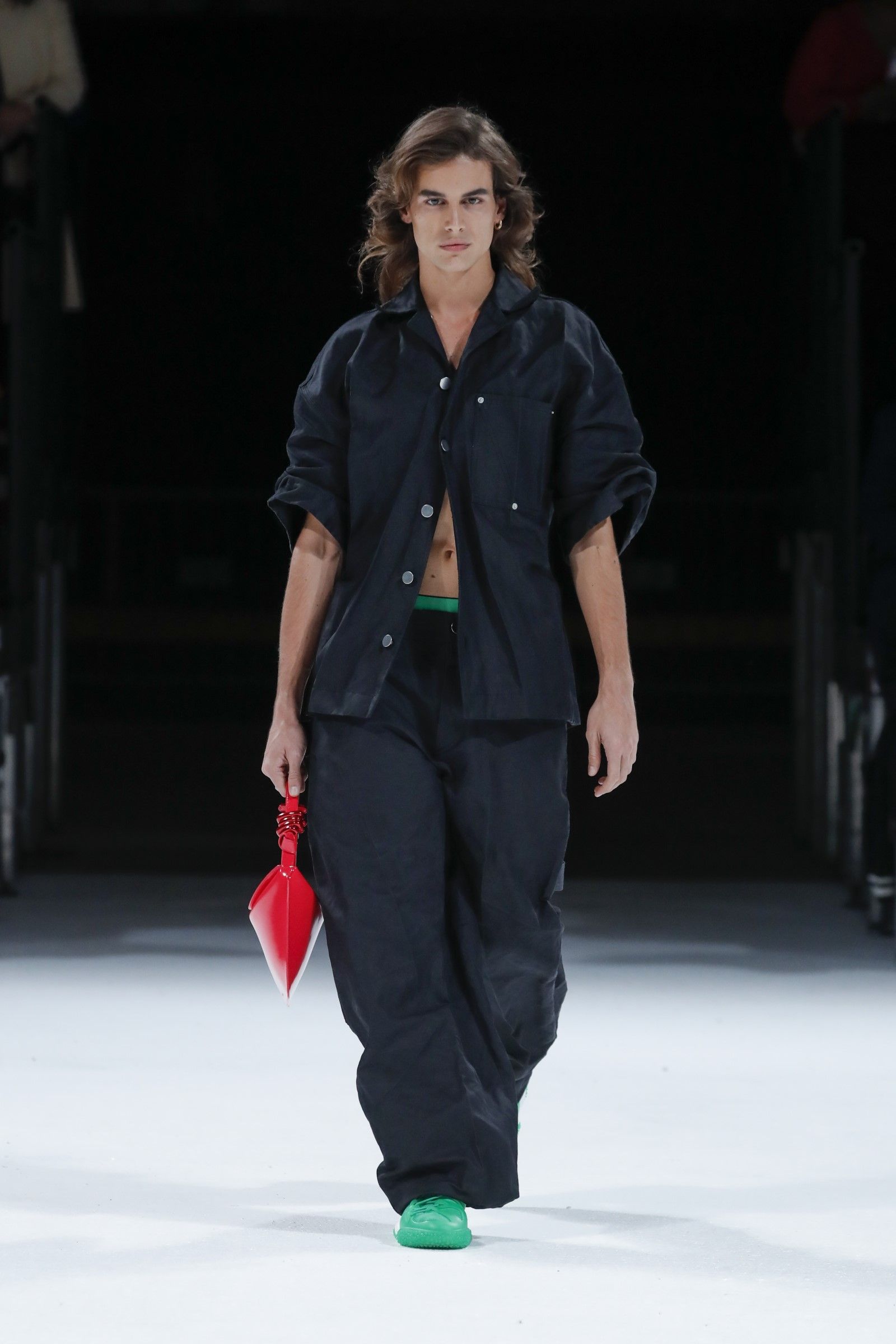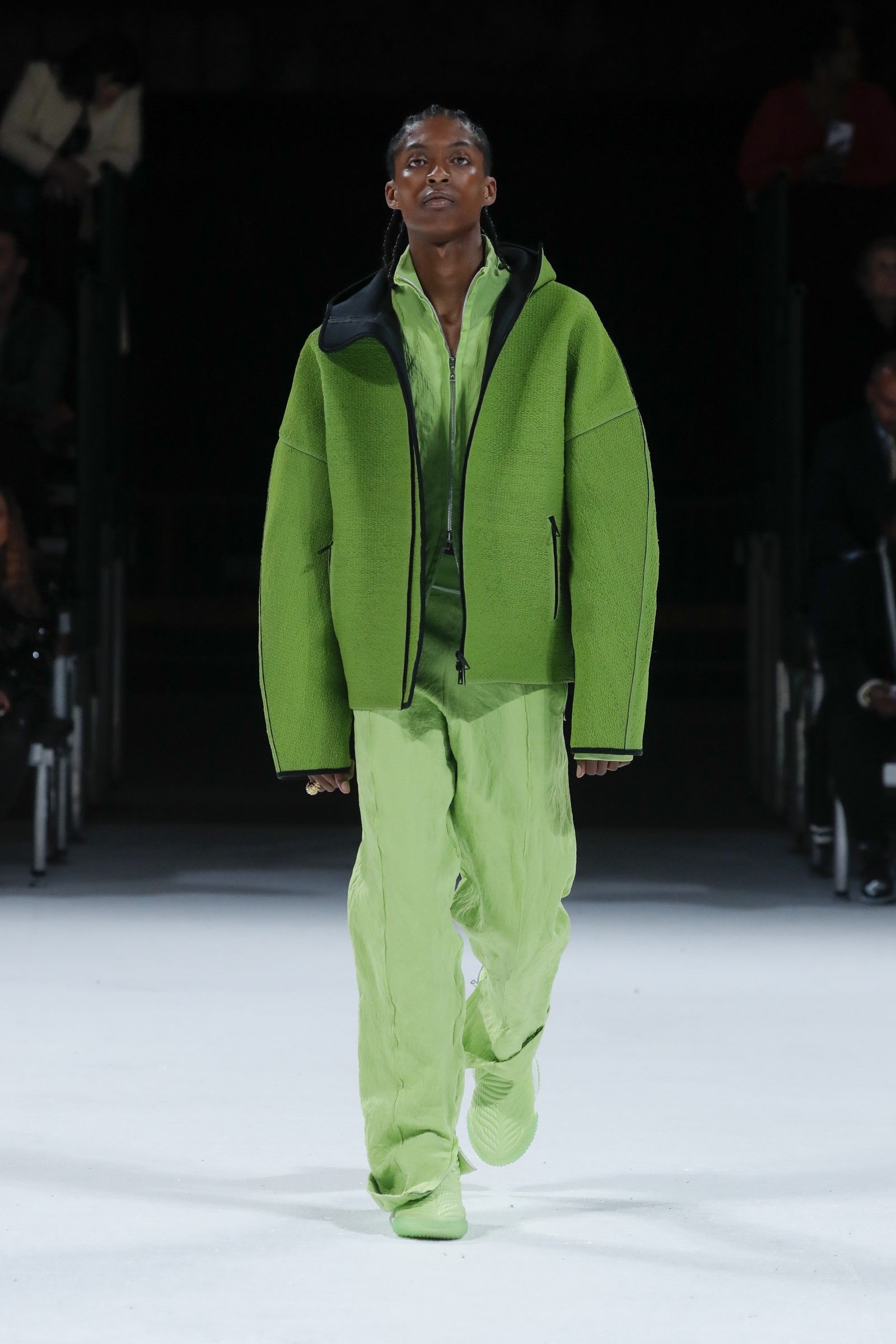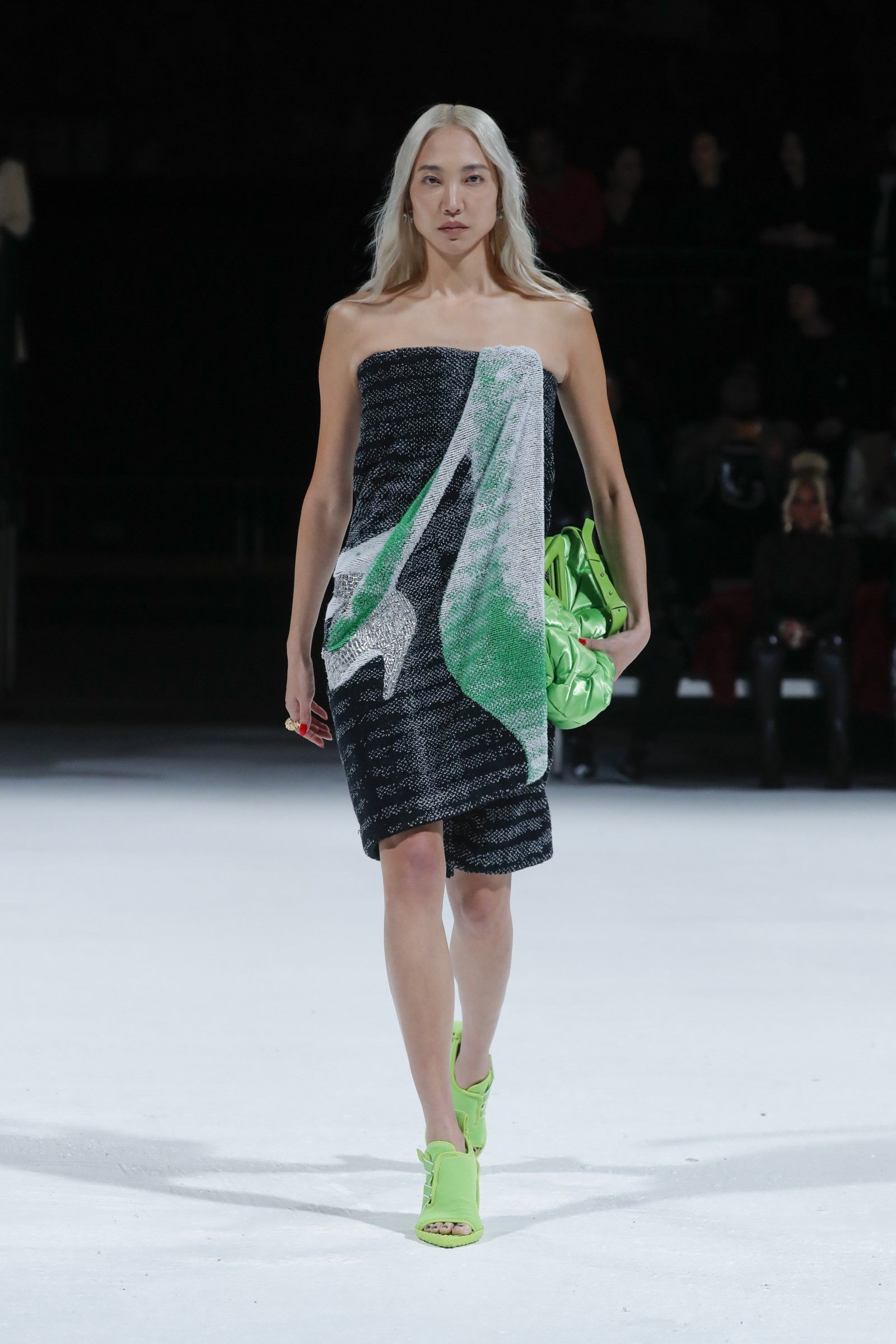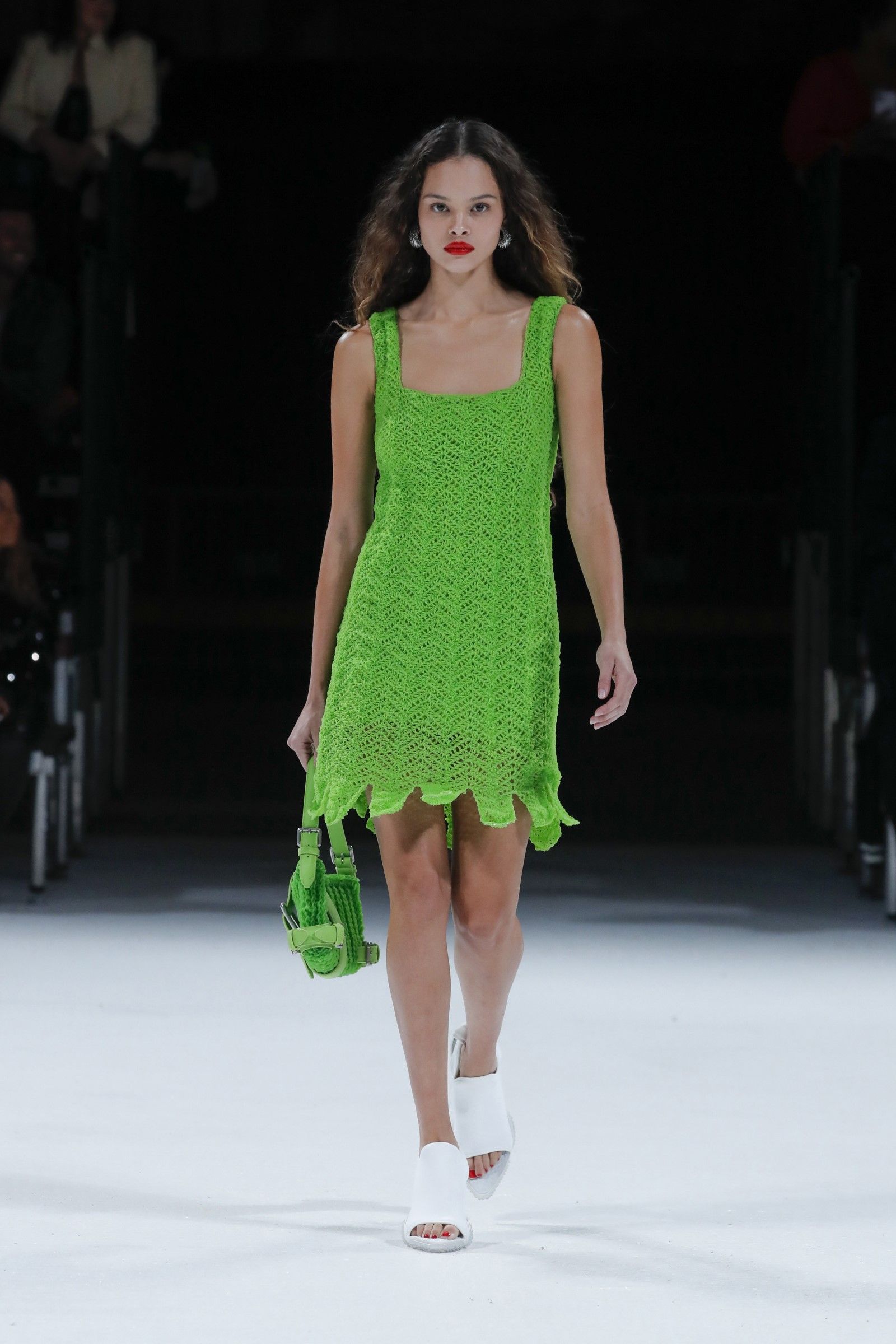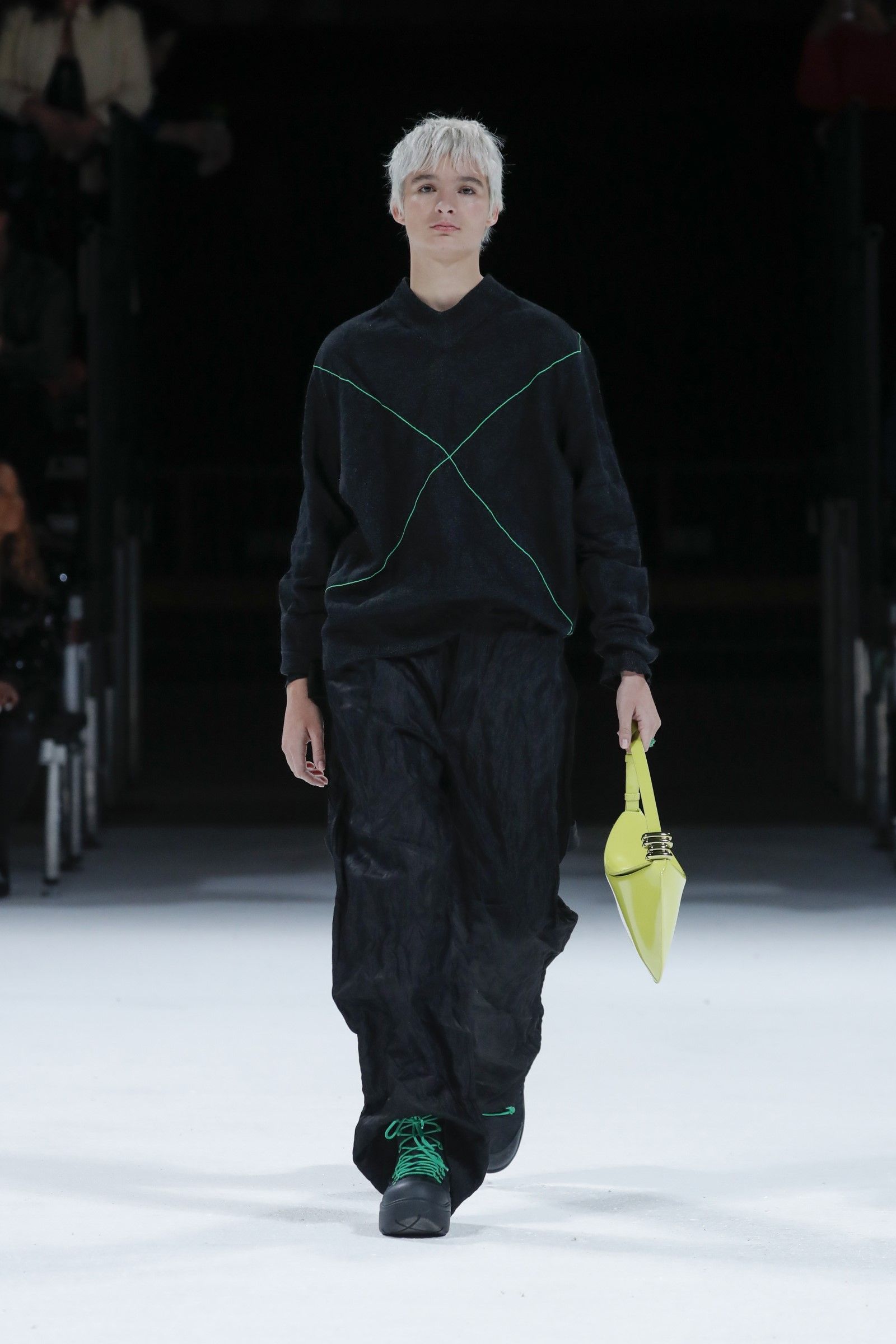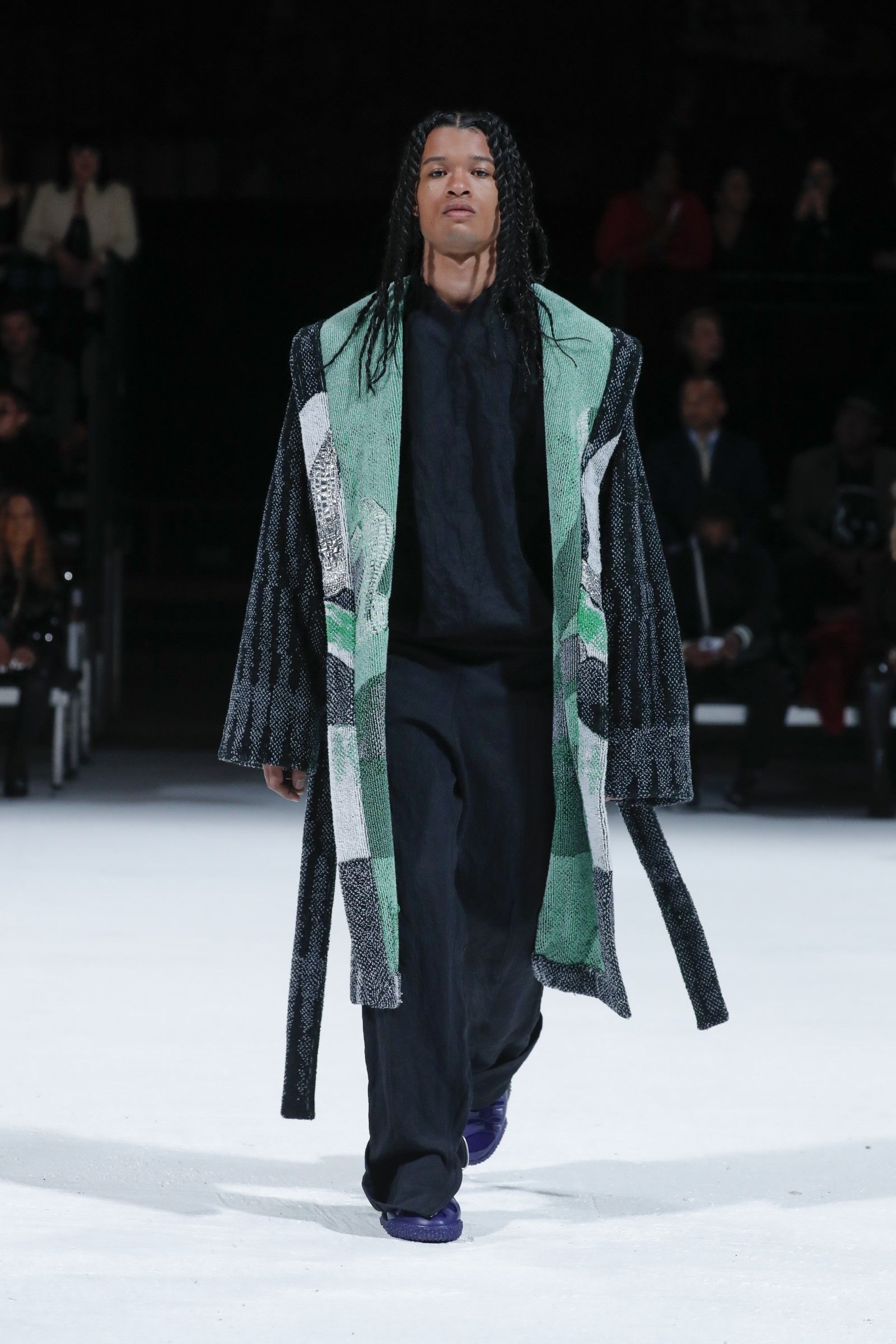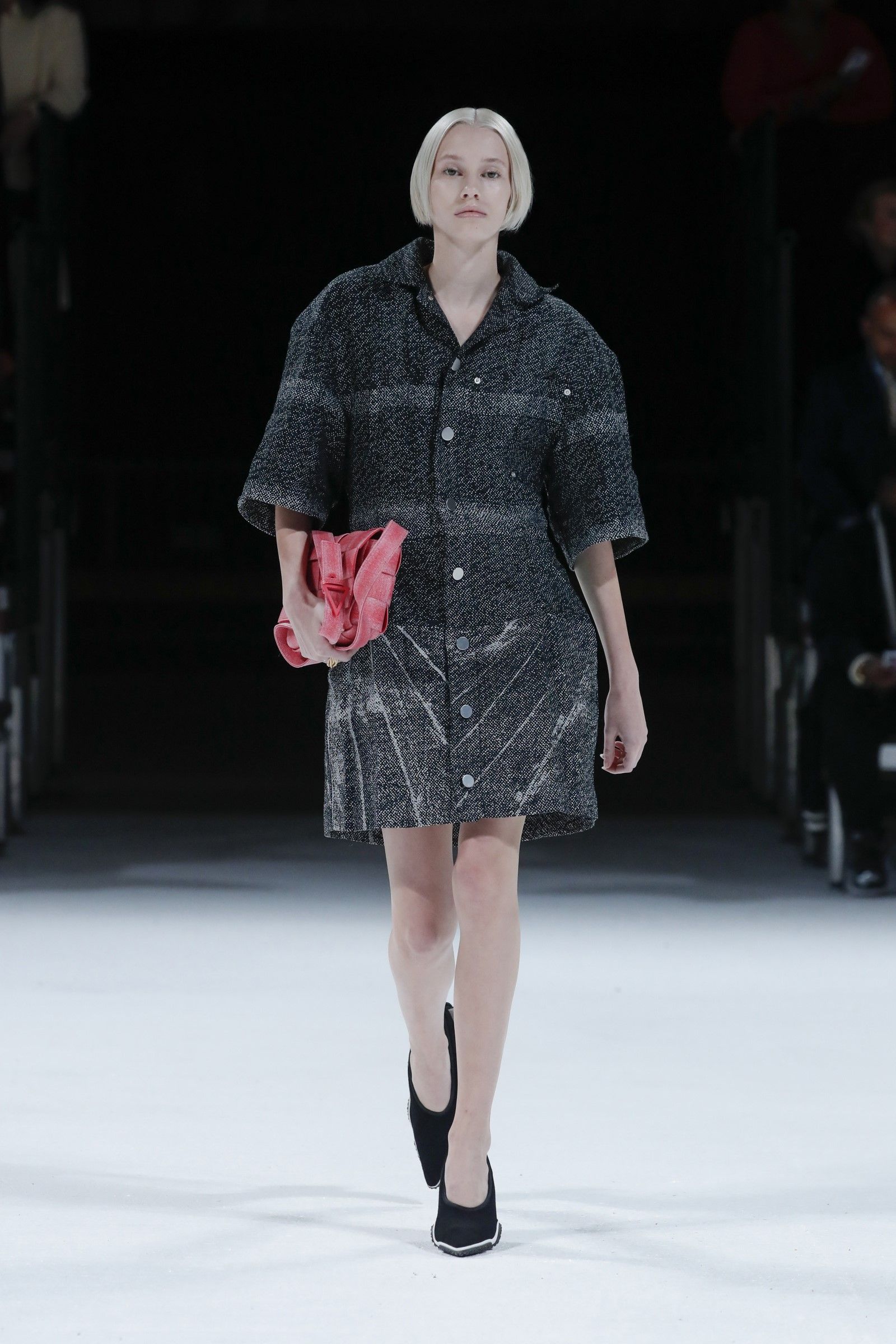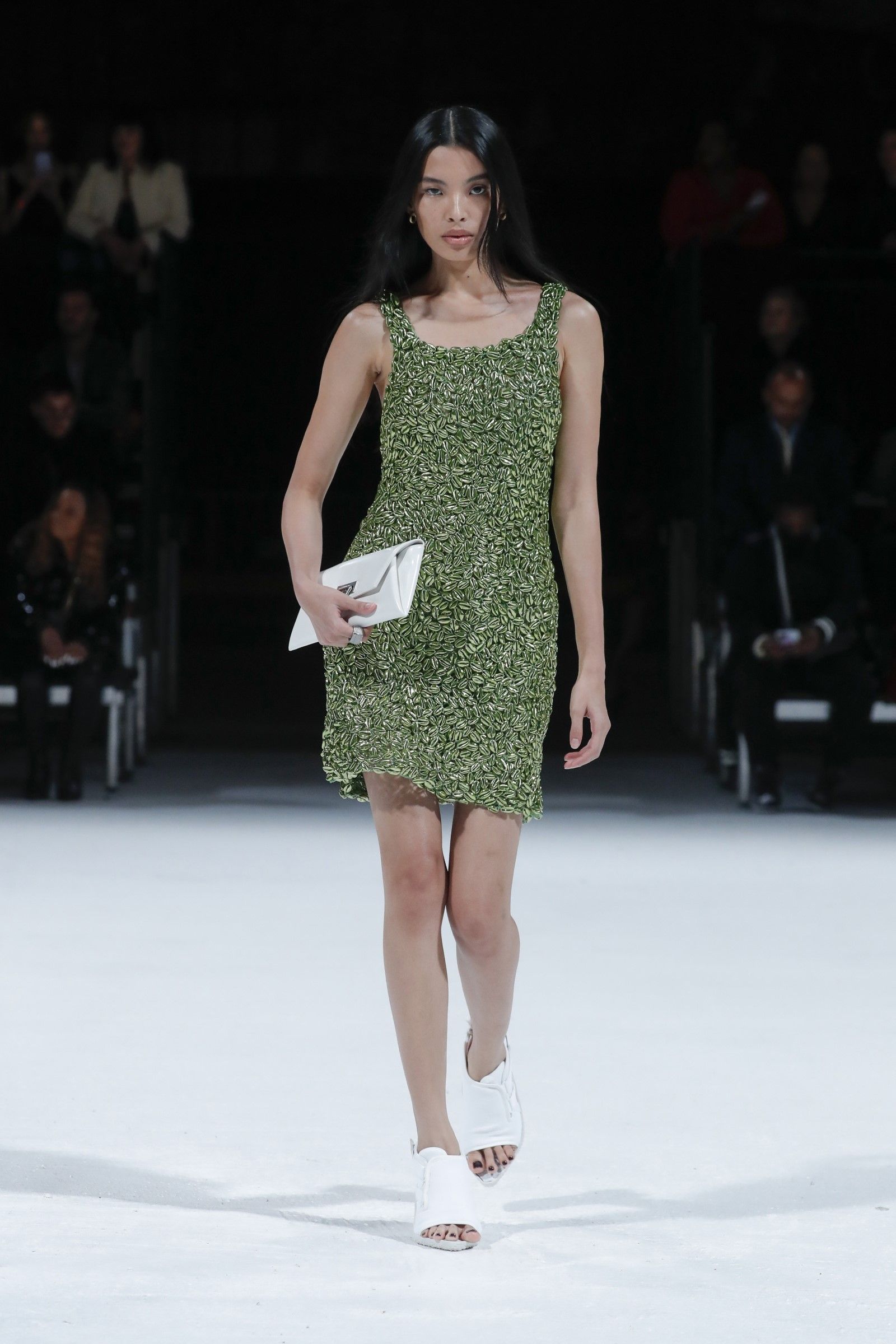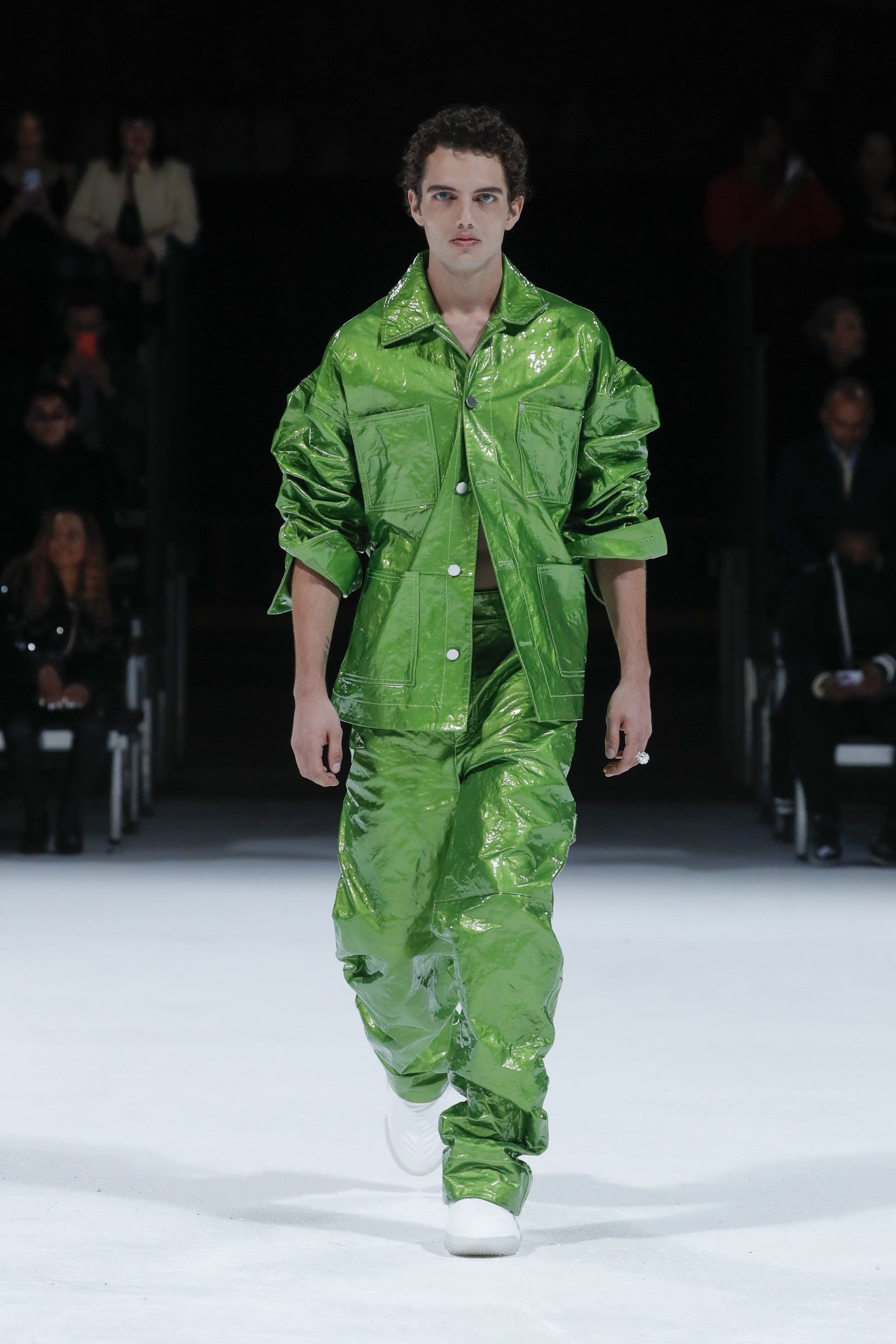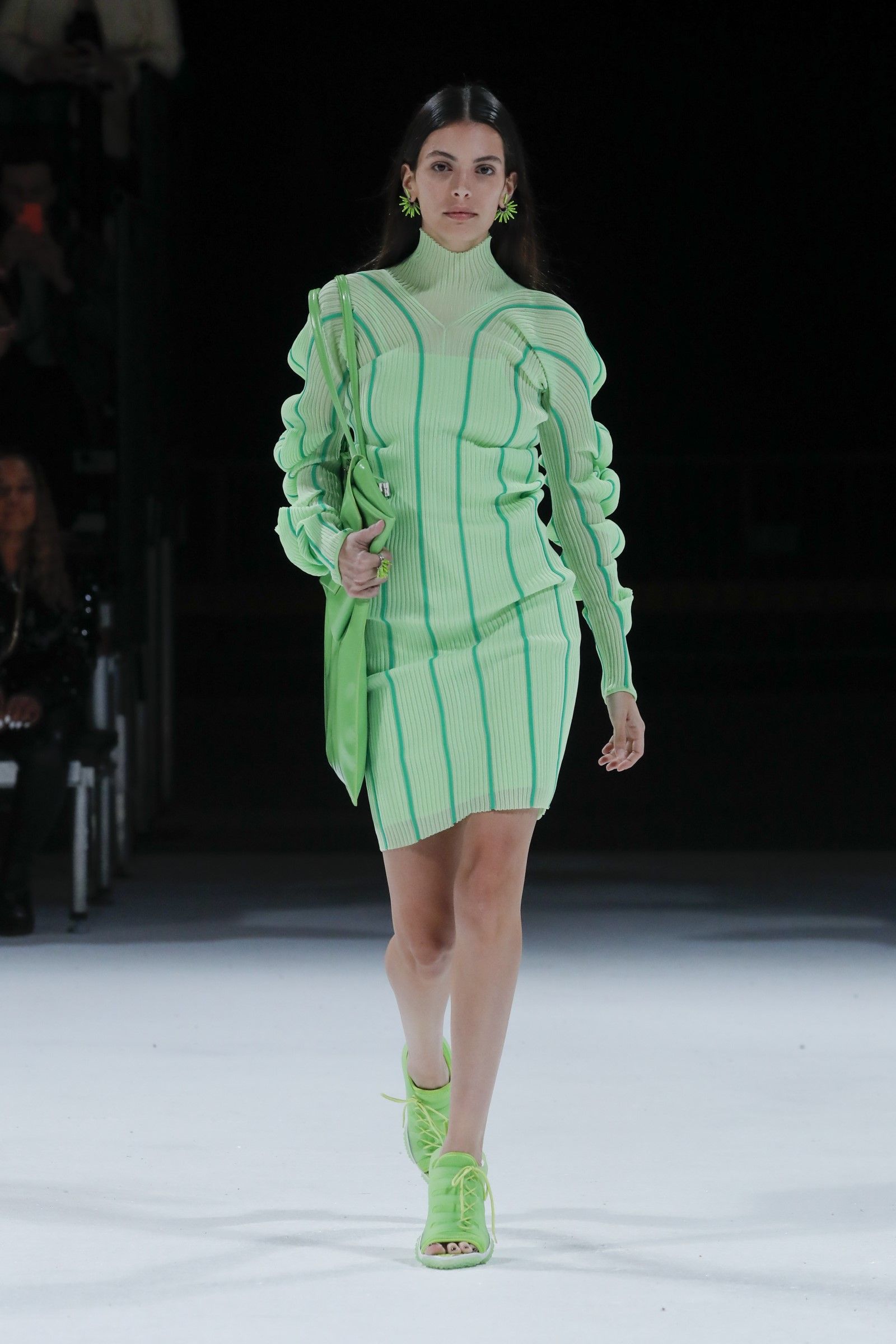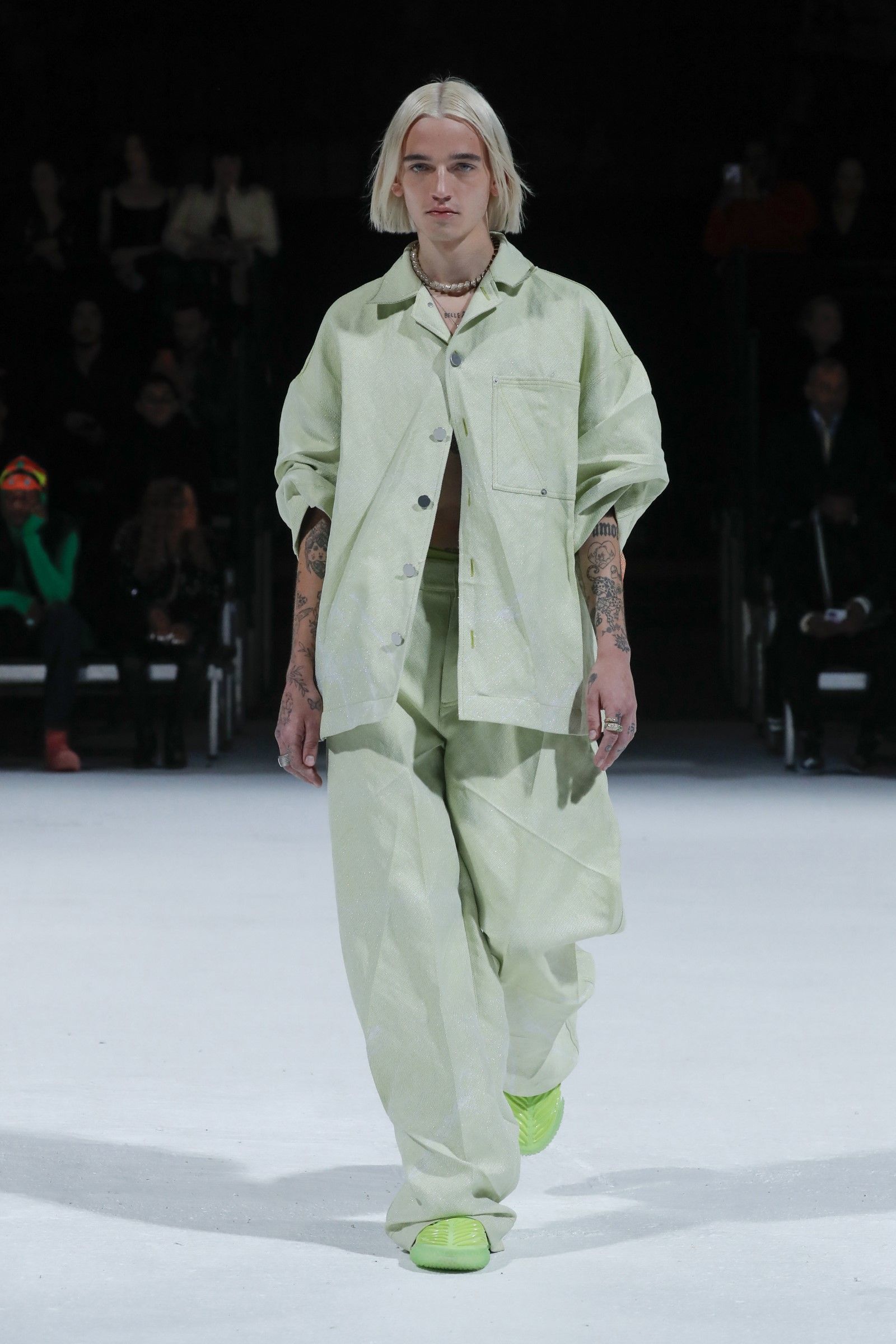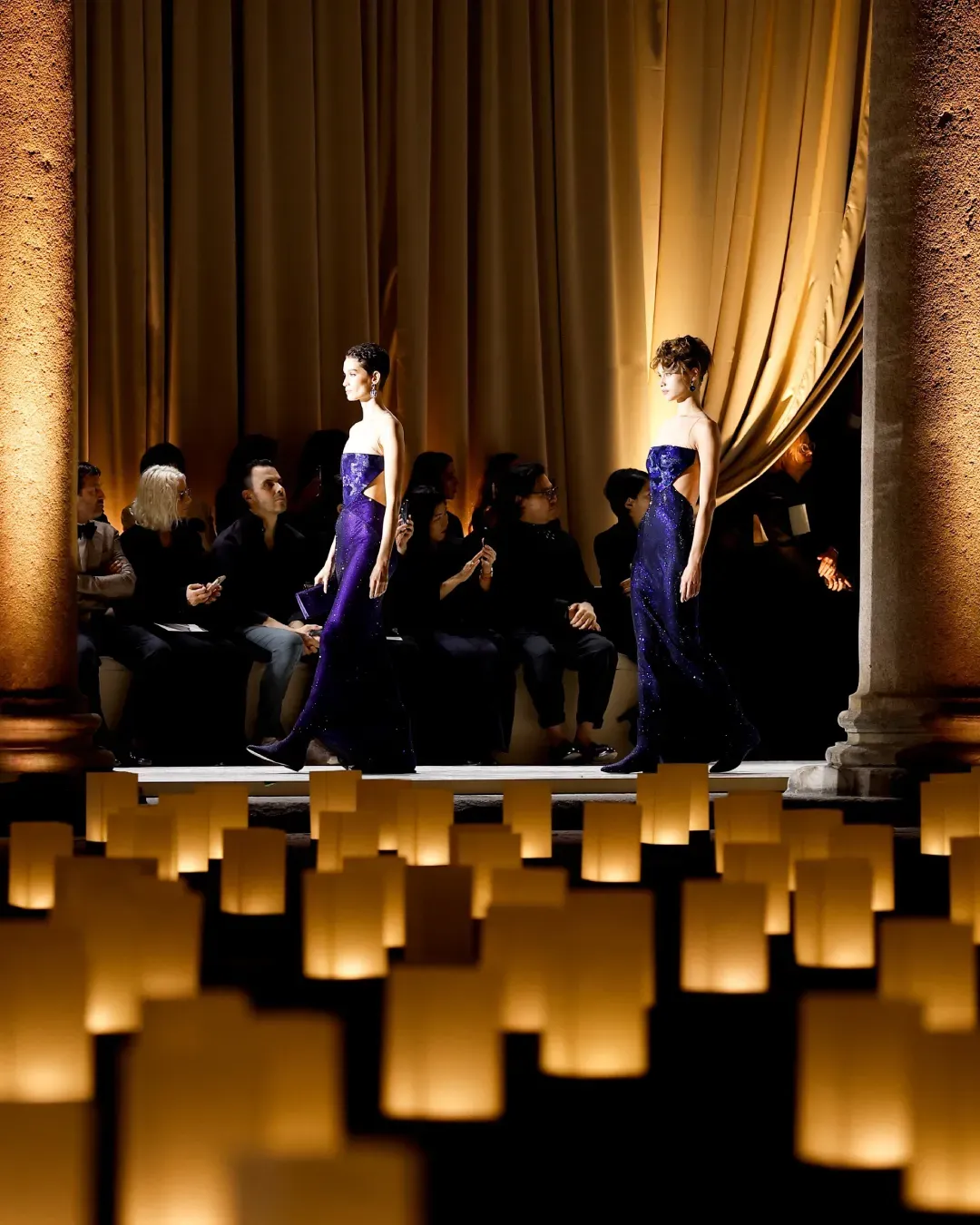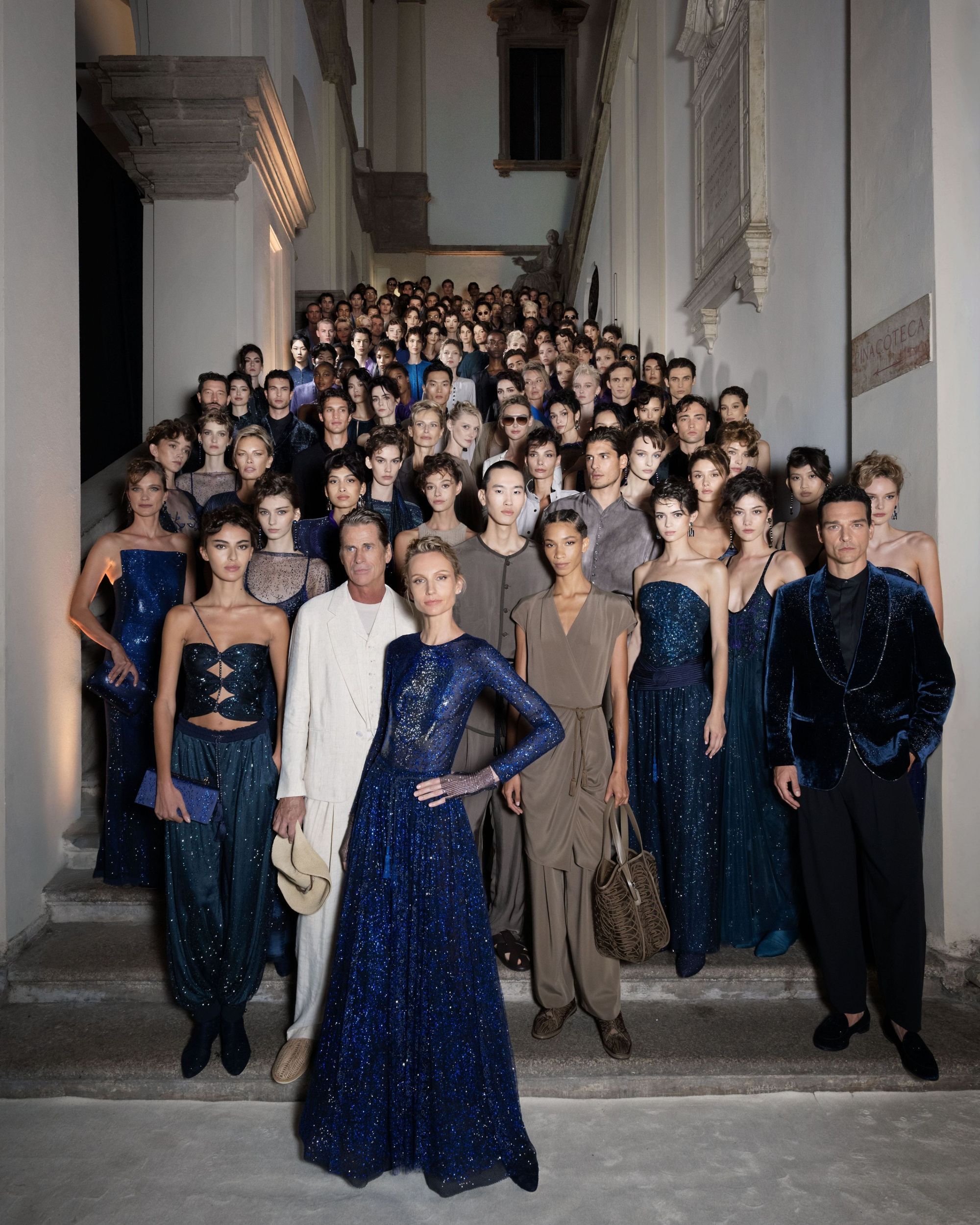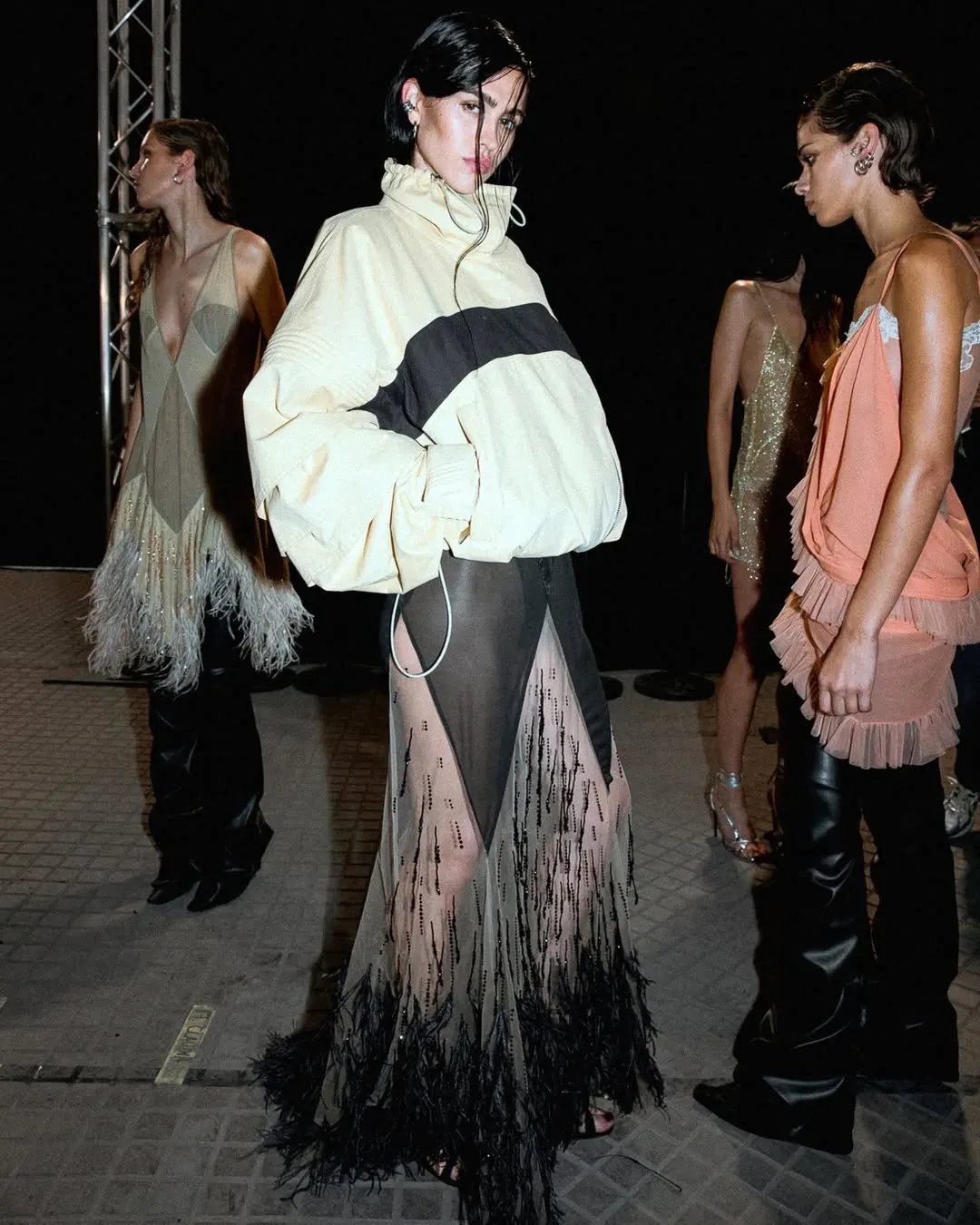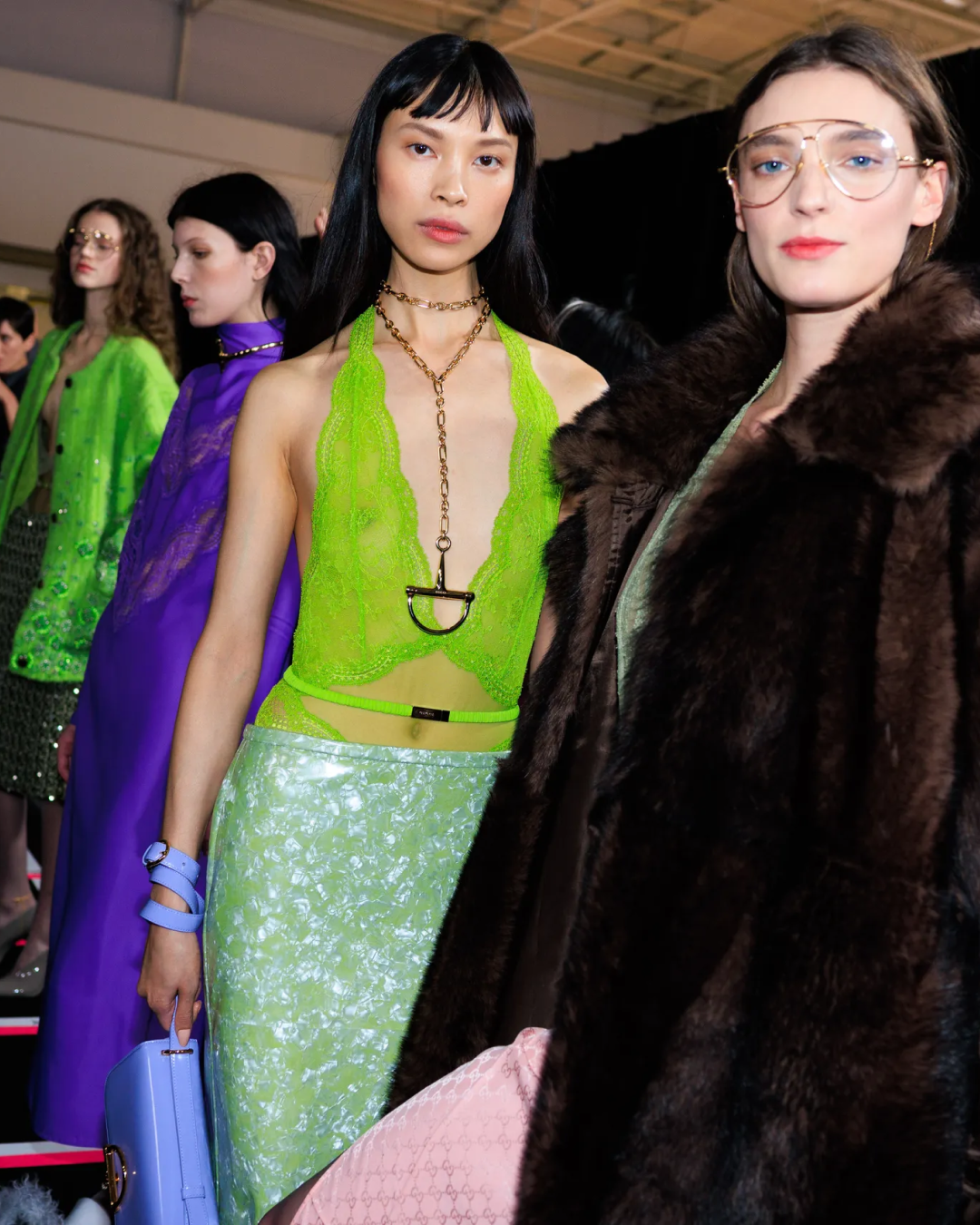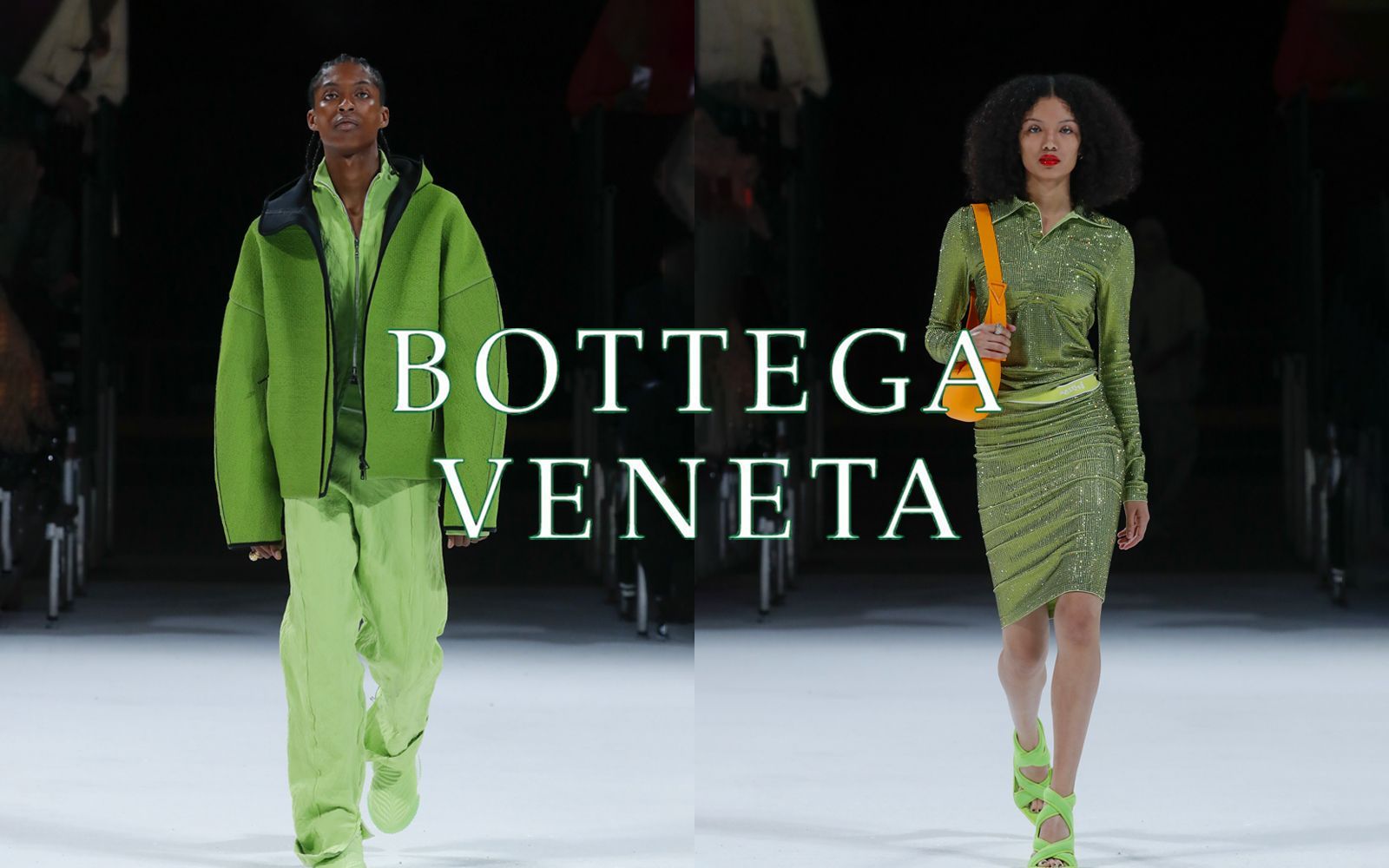
The informal luxury of Bottega Veneta for the Salon 03 collection Daniel Lee's fashion in the ruins of detroit's Michigan Theatre
For his latest Bottega Veneta show, staged last night with moodymann's music in the background, Daniel Lee chose perhaps the most evocative location in Detroit: the Michigan Theatre, an opulent cinema of the 20s built in Renaissance Revival style and later emptied and then transformed into a parking lot. Today, the Michigan Theatre is a melancholy symbol of the city's glorious past, of the fascinating contrast between the opulence of the past and the everyday life of the present, between the traditional glamour and the industrial world that have defined the history of the city cradle of innovation and techno music. And so it was the SS22 collection that paraded on the catwalk: a Bottega Veneta that put aside the almost militaristic aloofness and the sense of unapproachable opulence of the last two seasons in favor of an aesthetic that becomes more sporty and reminiscent of the industrialism that created the myth of the city, recalled through the use of metal fabrics and linked to the experience of Daniel Lee, grew up in an industrial city in northern England, as well as the use of workwear stylistic features but with a relaxed and informal attitude.
Even in this as in the other collections, however, the attention to party dressing remains firm: the sequined cocktail dresses, the sparkling men's blouses that seem to come out of Studio 54, the knitted dresses and those in the style of the 50s coupled with sneakers. Everything speaks of a relaxed, comfortable and livable coolness. But to dominate the range of clothes are sculptural parkas, sleeves cut almost to create a rounded effect and above all monochromatic suits composed of shirts, sweaters and trousers often oversized composed or a crumpled looking fabric that would seem a kind of new male uniform, minimalistic and informal.
Despite the simplification of the outfits, there remain some experiments on the texture of the clothes to which Lee had already accustomed us: fabrics where the fabric is mixed with metal to make the silhouette manipulable, sparkling surfaces such as vinyl or covered with sequins, recycled synthetic materials. What has disappeared is the formal gravitas that had populated the past collections in favor of a more understated and therefore more recognizable luxury, reassuring in its ability to wrap the body but with the added idea of dramatizing and challenging every preconception of proportion and structure.
In addition to his appreciation for the mixture of musical culture and avant-garde industrialism, the collection was born from Daniel Lee's desire to collaborate with the multidisciplinary communities of creatives that animate the Detroit scene today. For this reason, the brand has also created a creative retail space in the city at 1201 Bagley called The Firehouse located in an old fire station whose original structure has been kept intact. The space is shared with the work of local artists, designers and curators to put a spotlight on the region's talents.
The feeling that is derived from this initiative but also from the new spirit that animates the collection is that of a younger and, in some ways, democratic aesthetic. After all, this is the show that broke the tradition of closed-door shows of a brand that suddenly became mysterious and incommunicable. And so to parade a collection that gives an informal turn to the luxury so far proposed by Lee with a worldwide livestreaming (there was also the takeover of a mega-screen in Time Square in New York) would seem to want to democratize the aesthetics of Bottega Veneta, abandoning the idea of ineffable glamour that, as the setting of the ruined theater might suggest, it is a thing of the past, and to return to be seen, to take to the road, to populate cities all over the world with a new and open language.










































